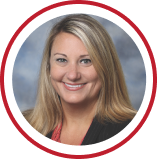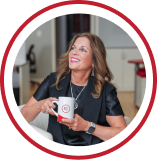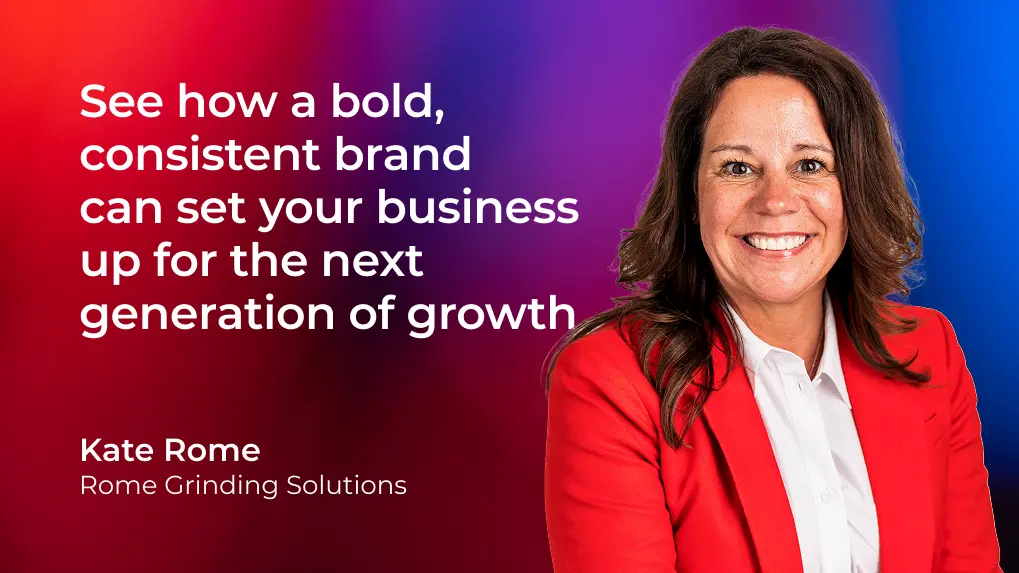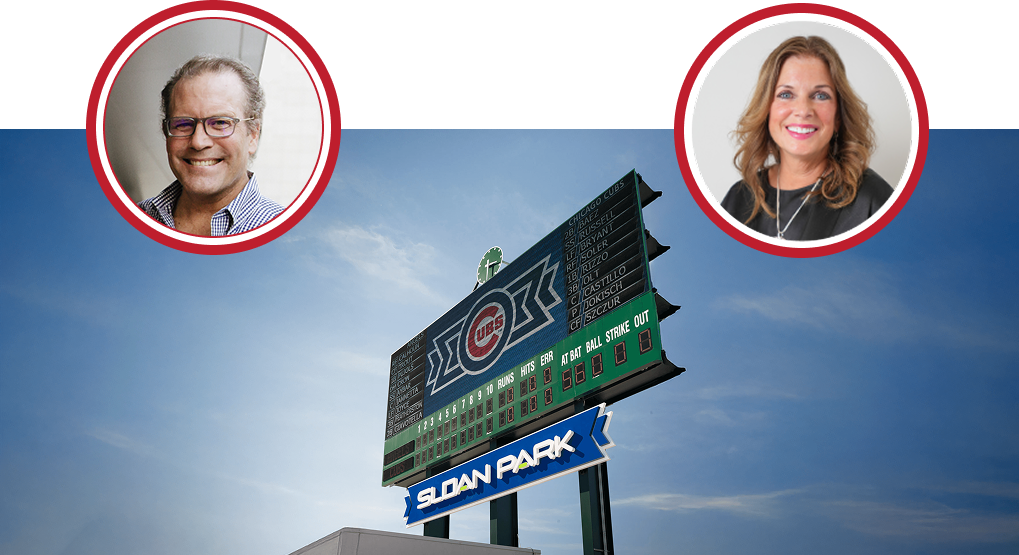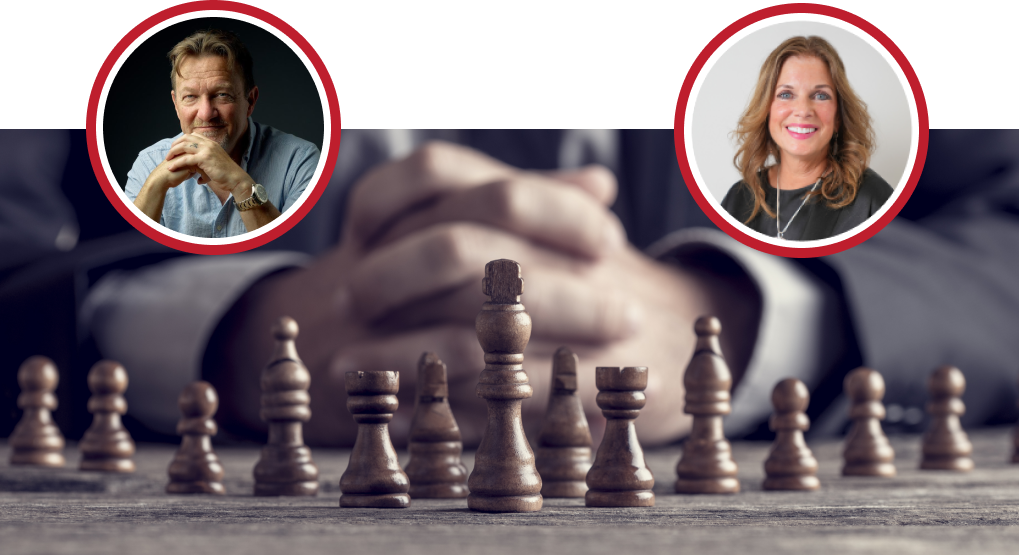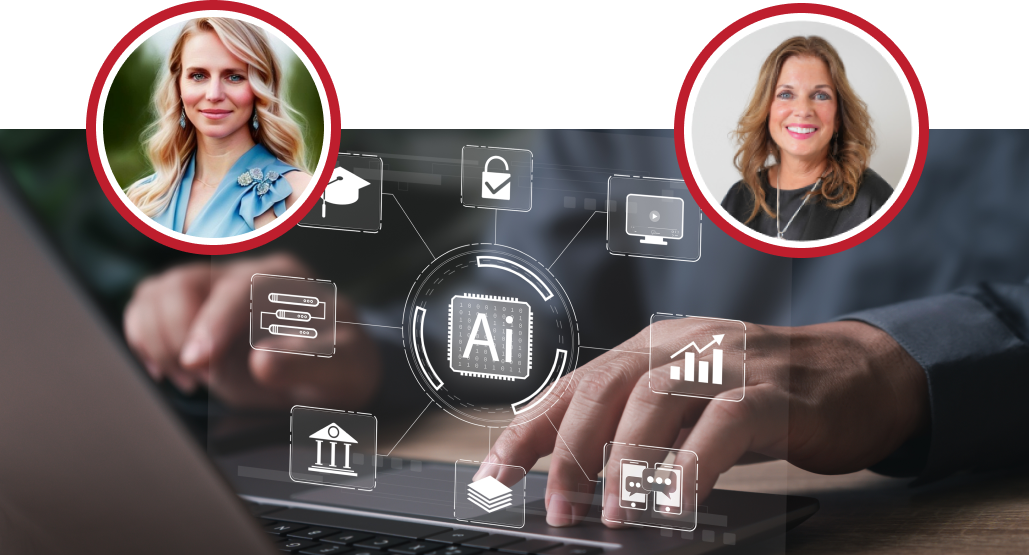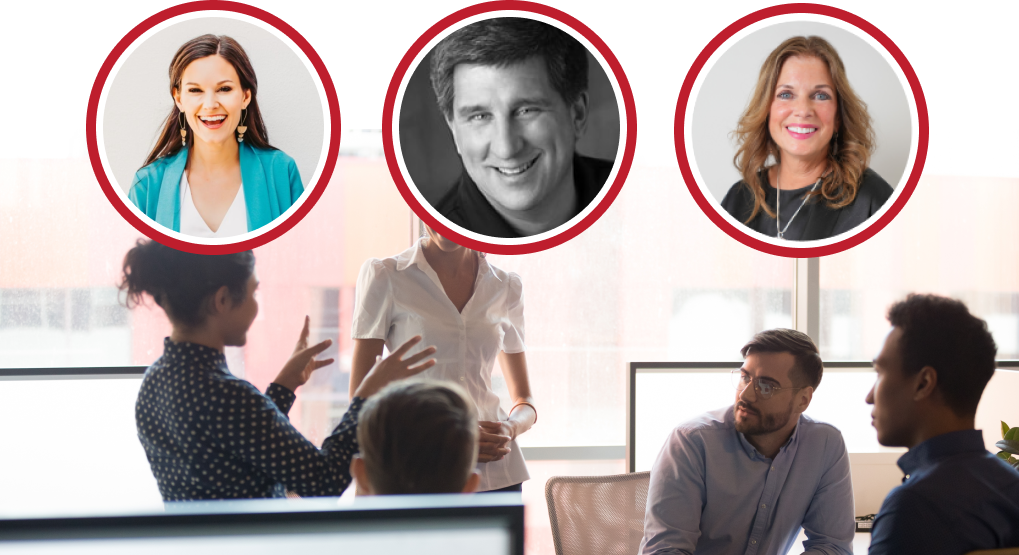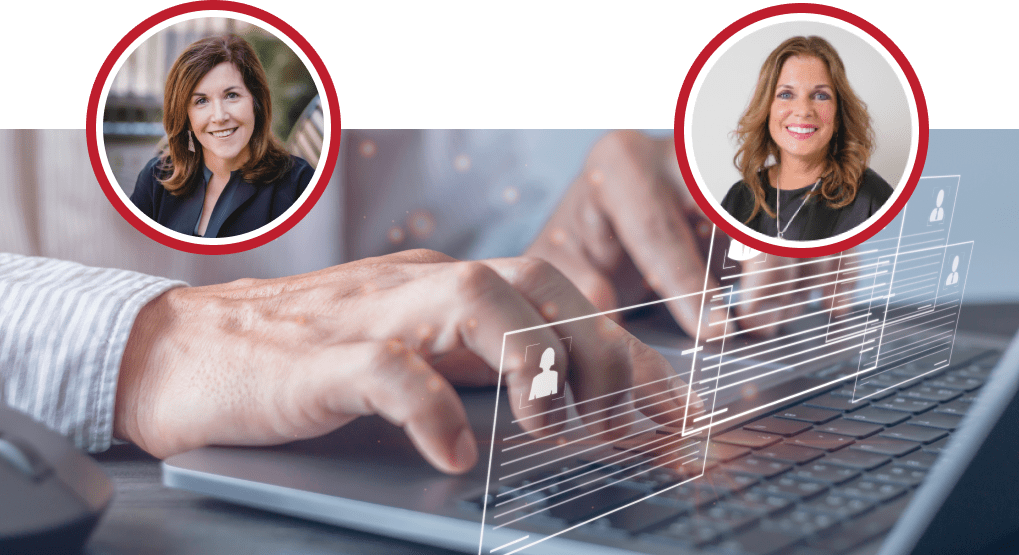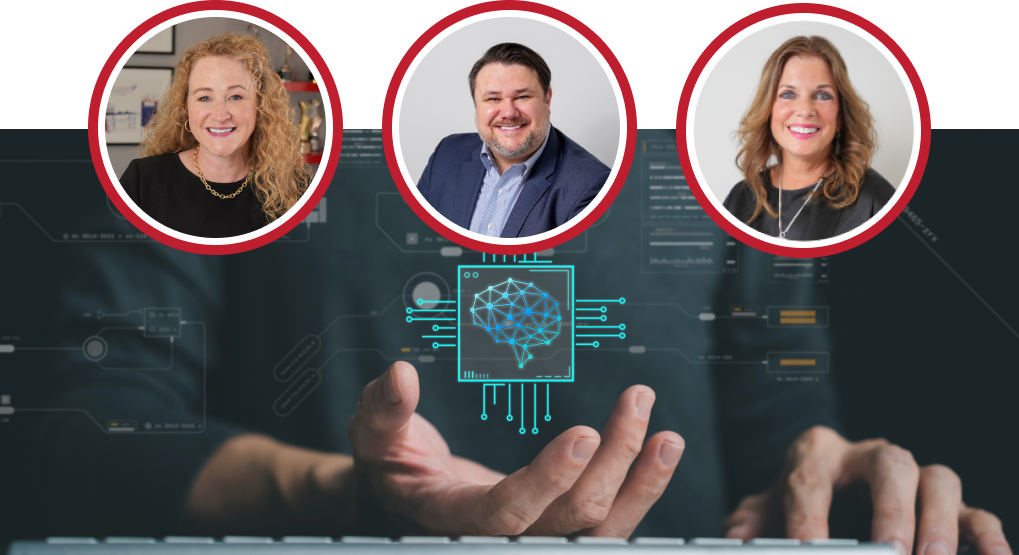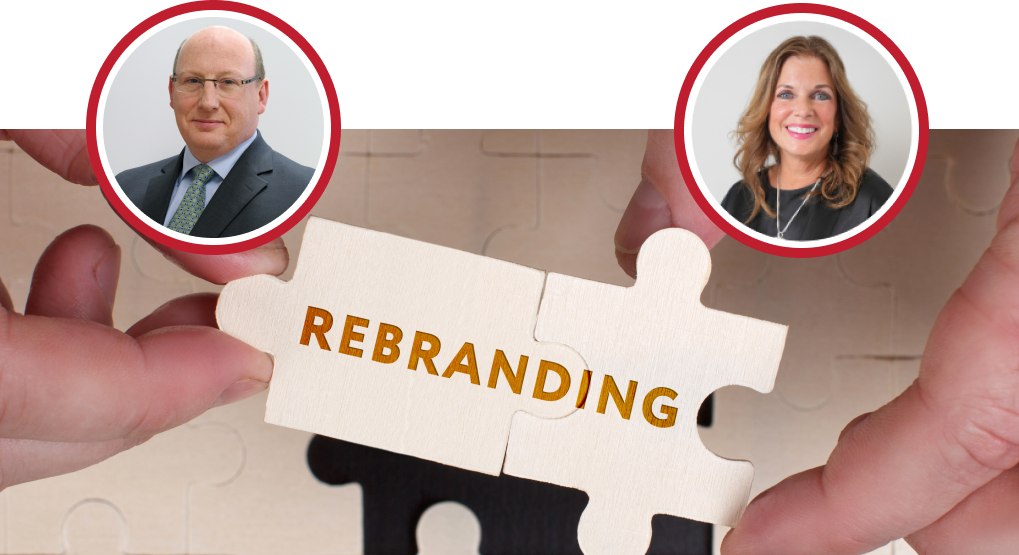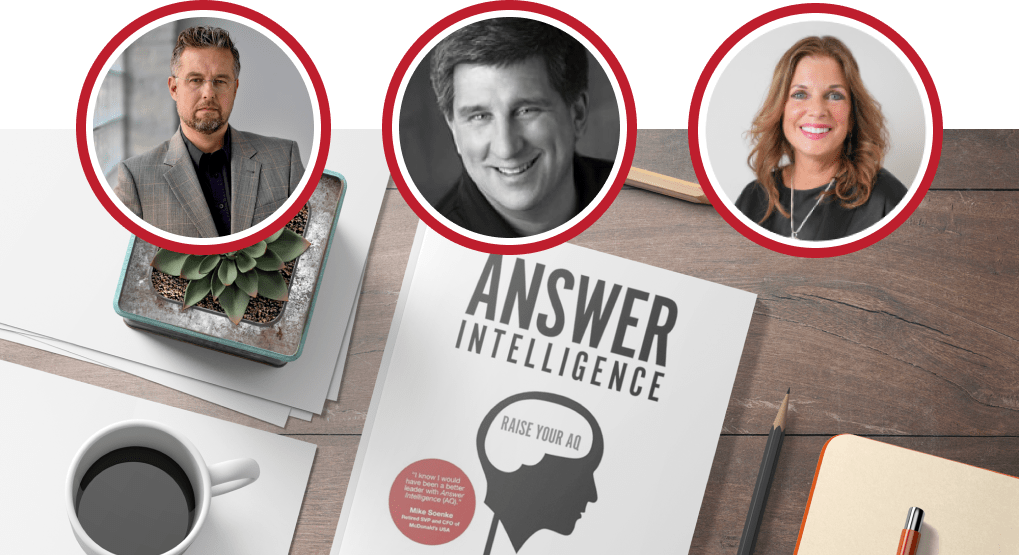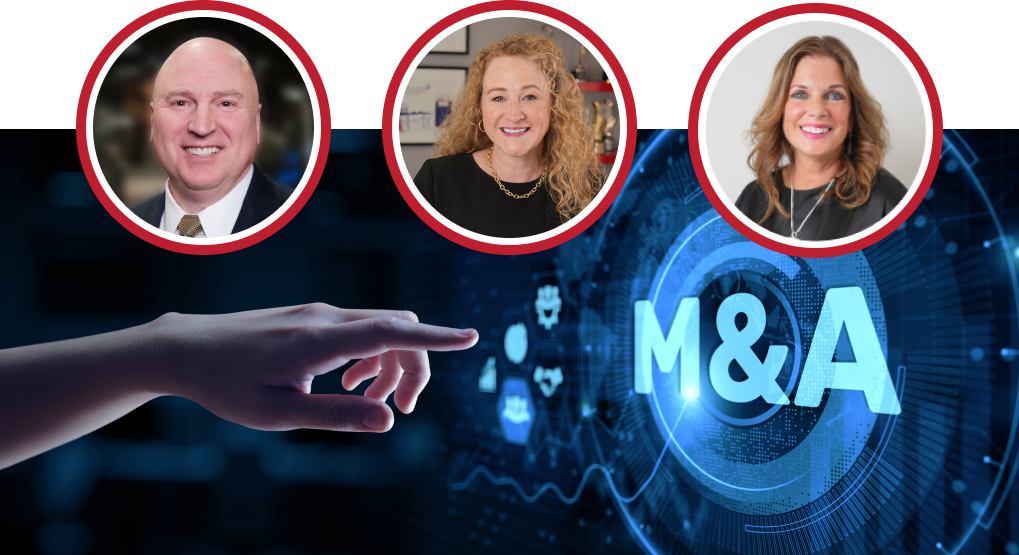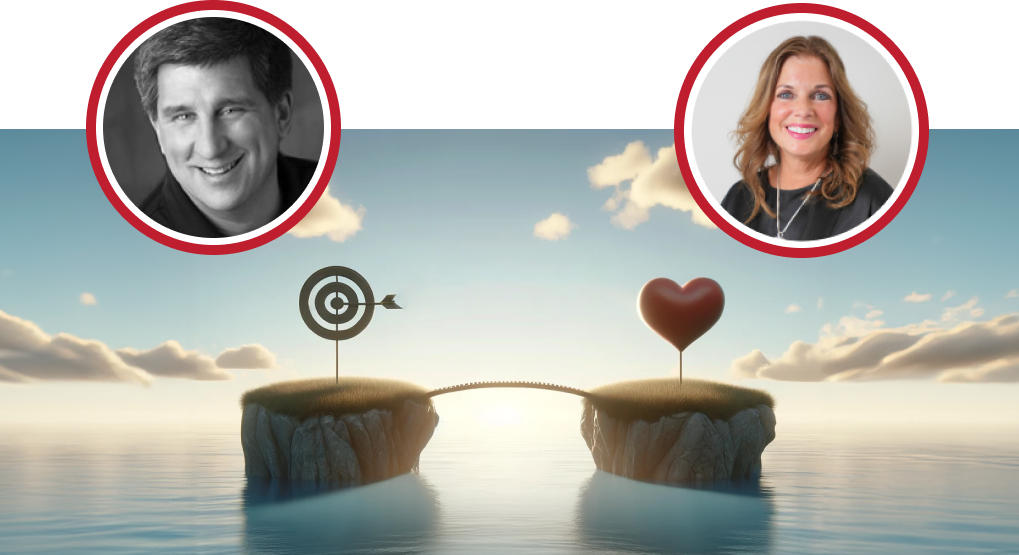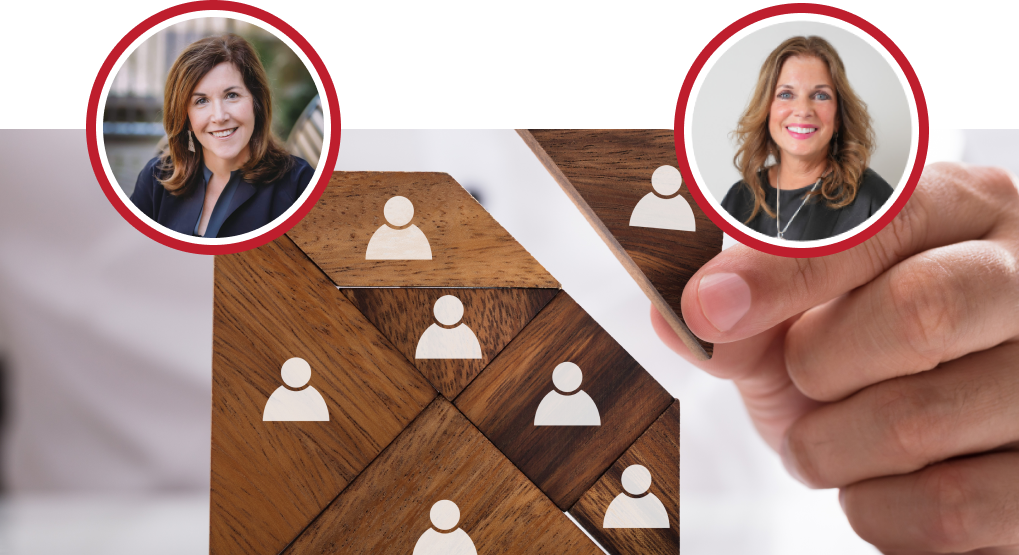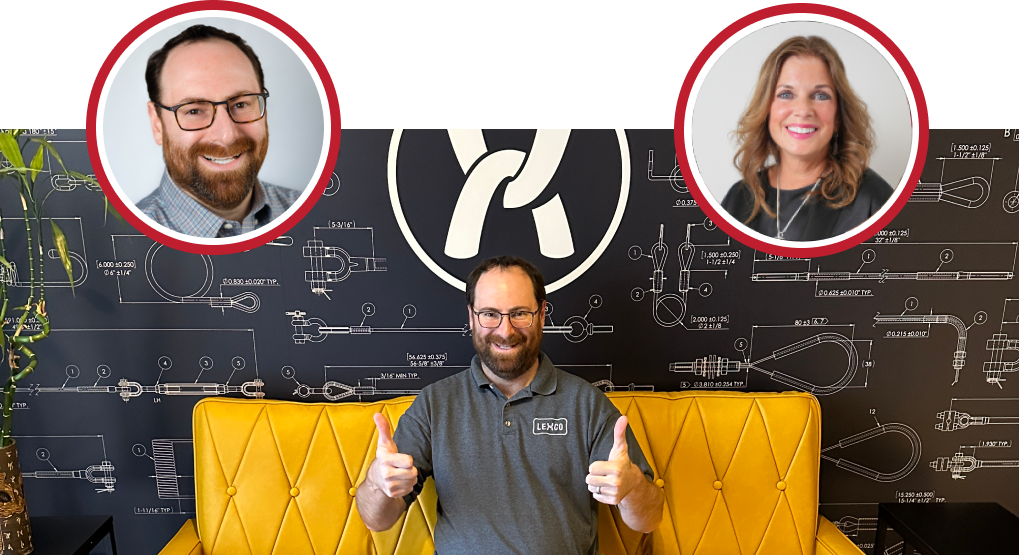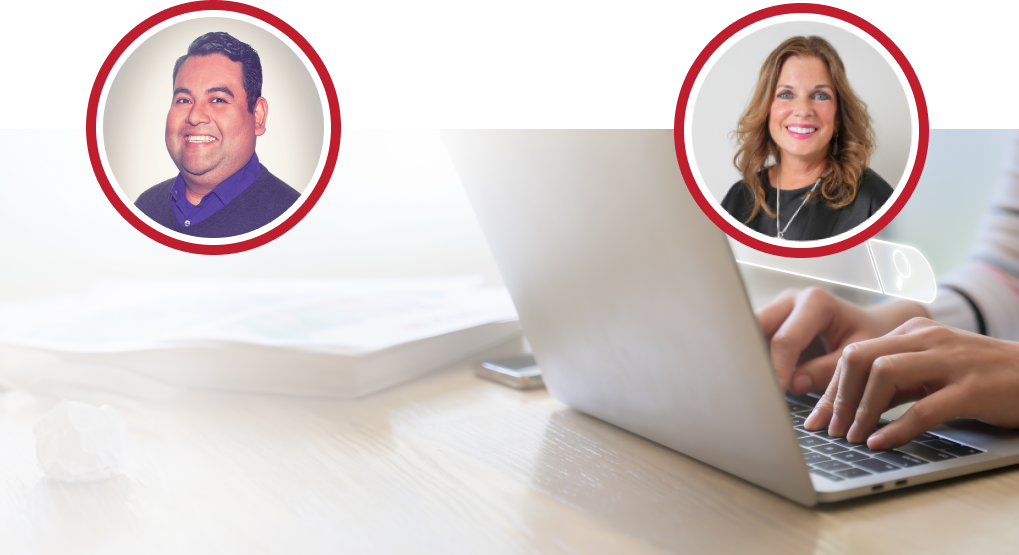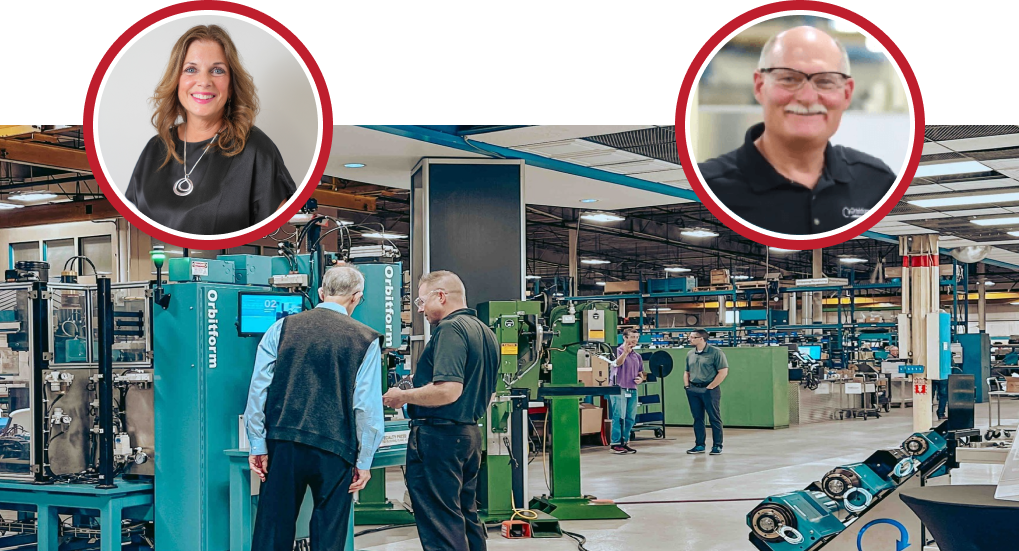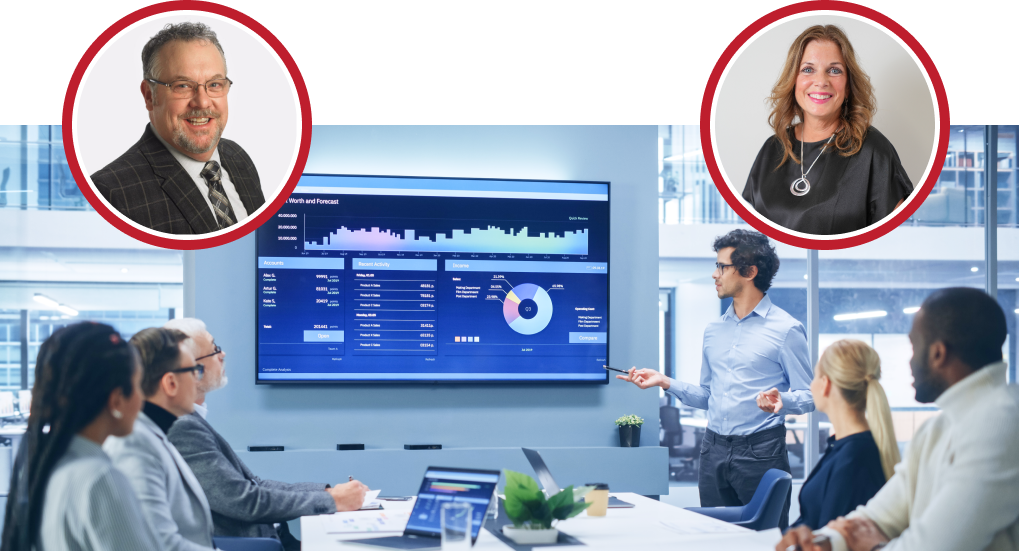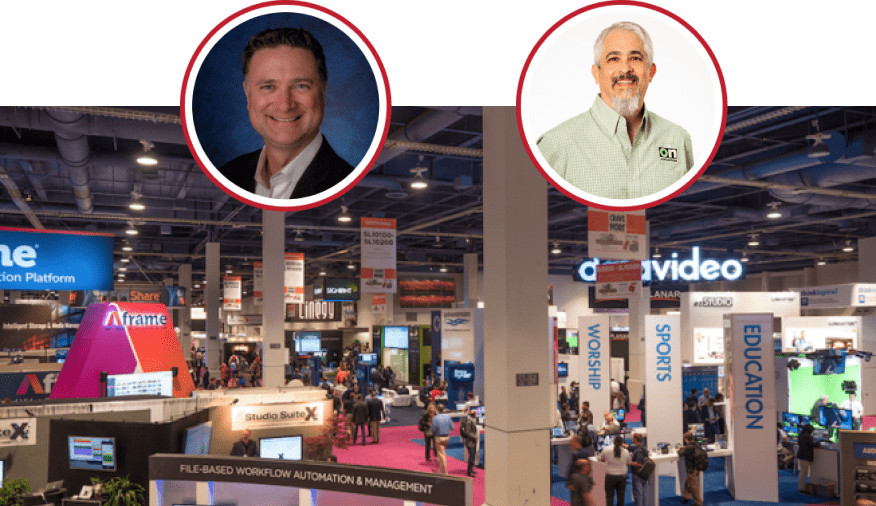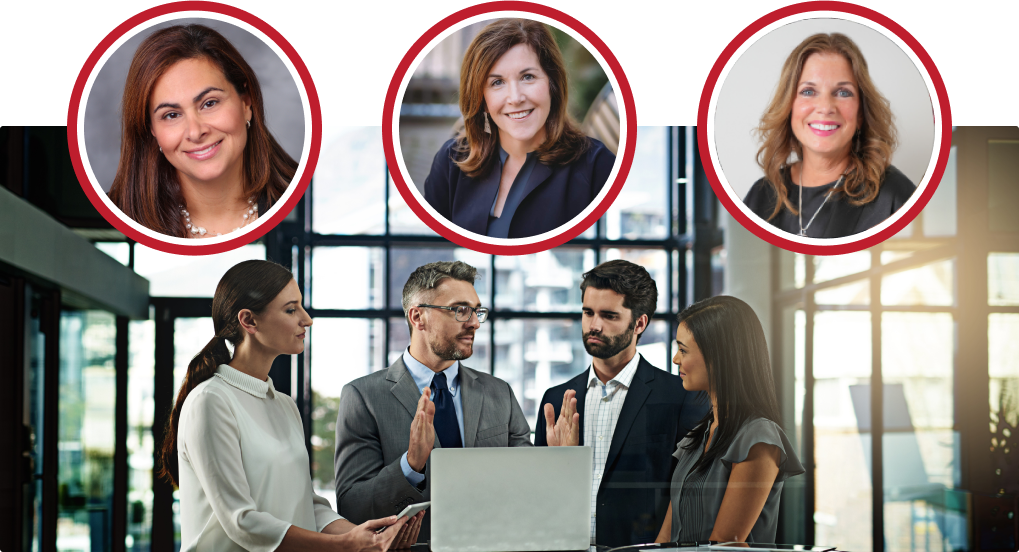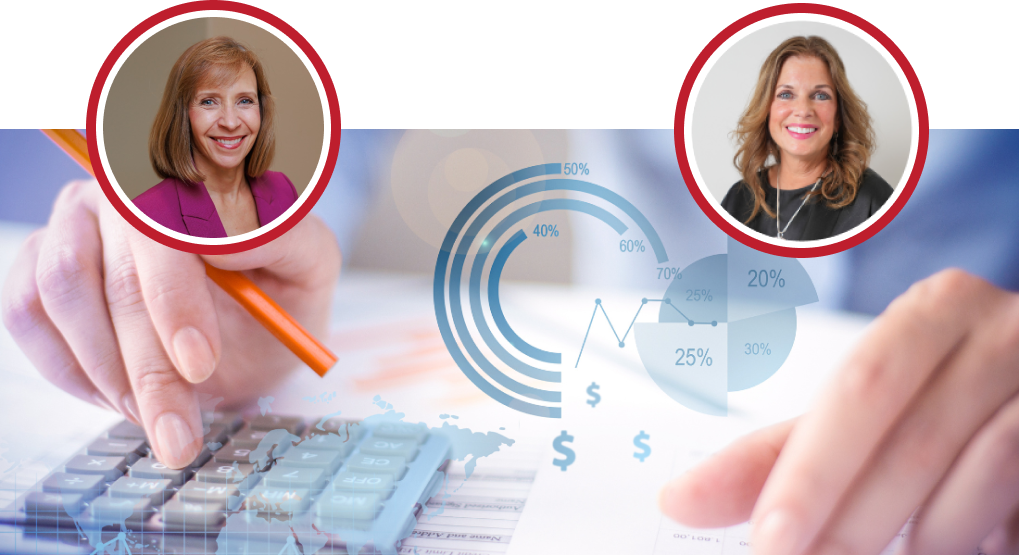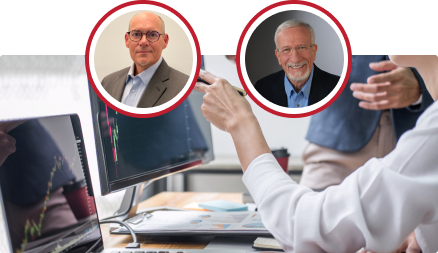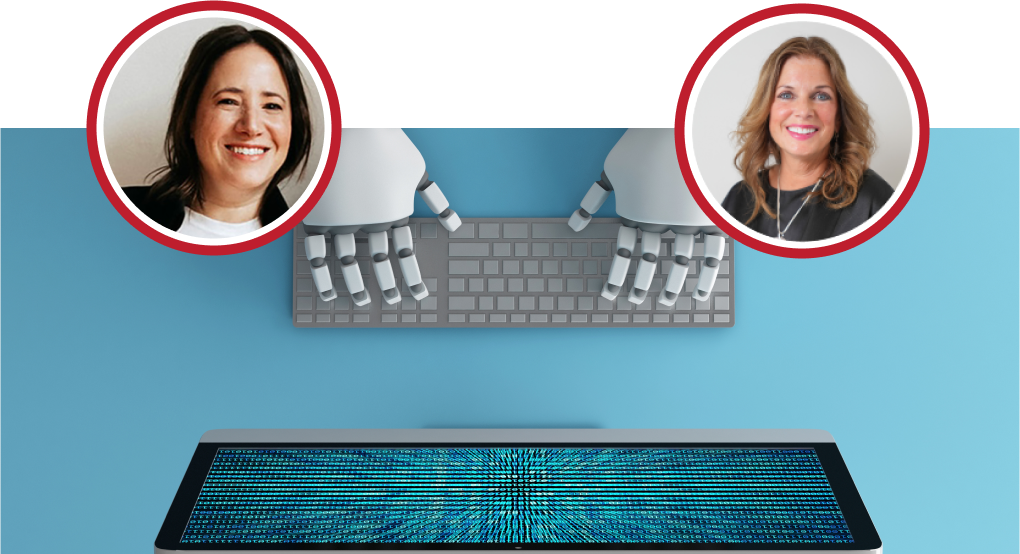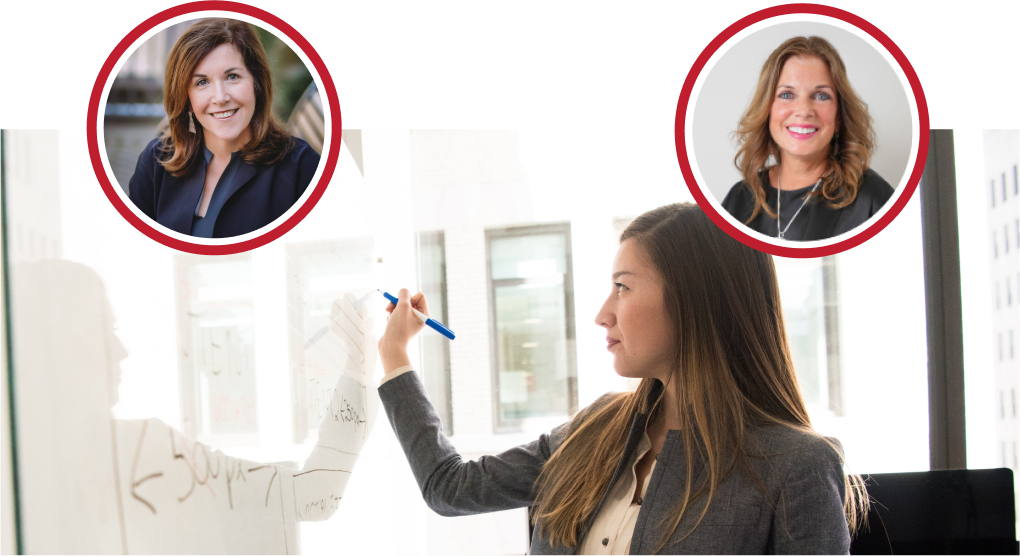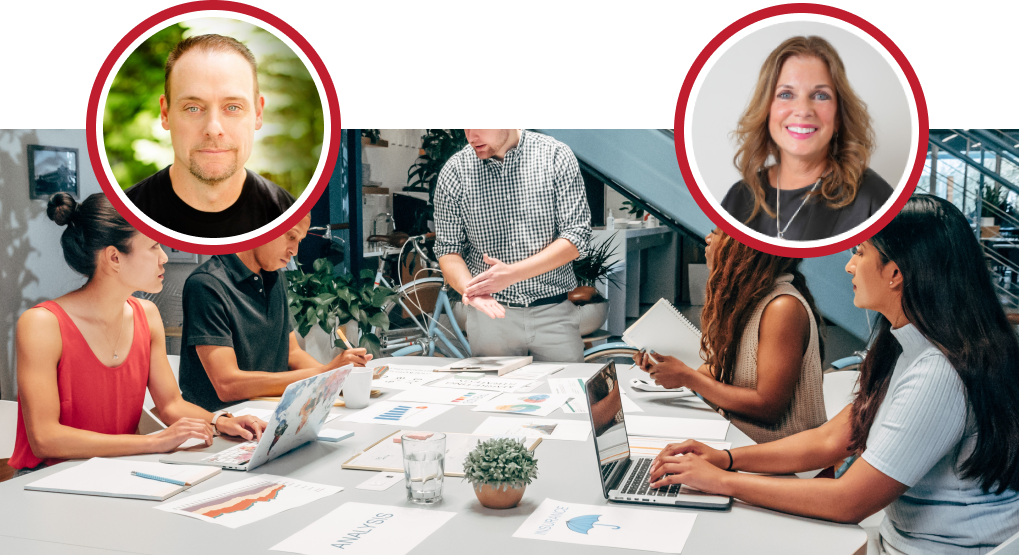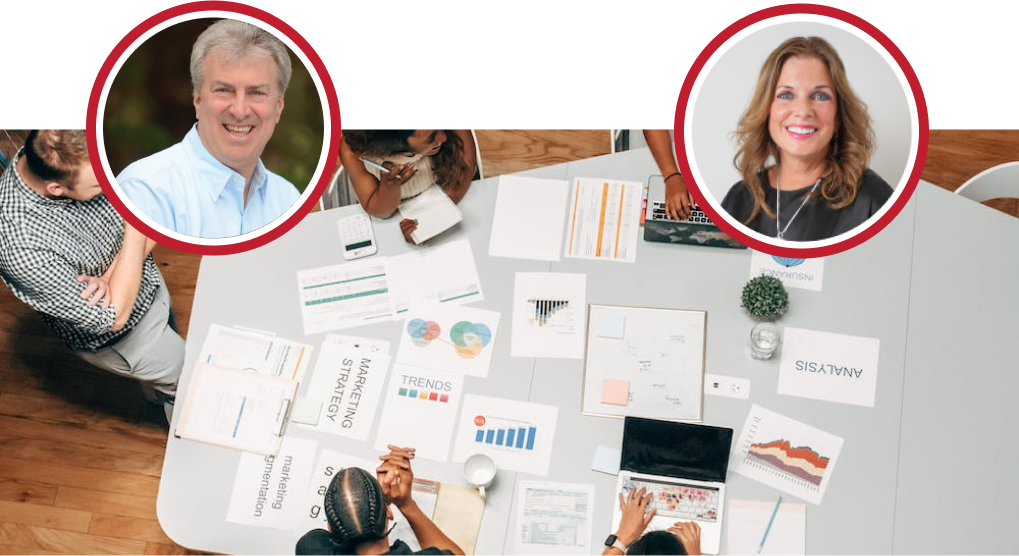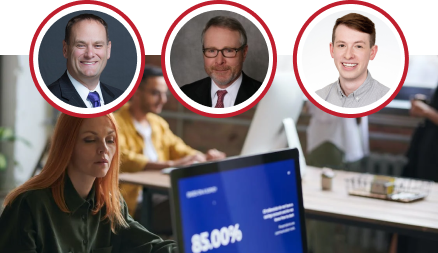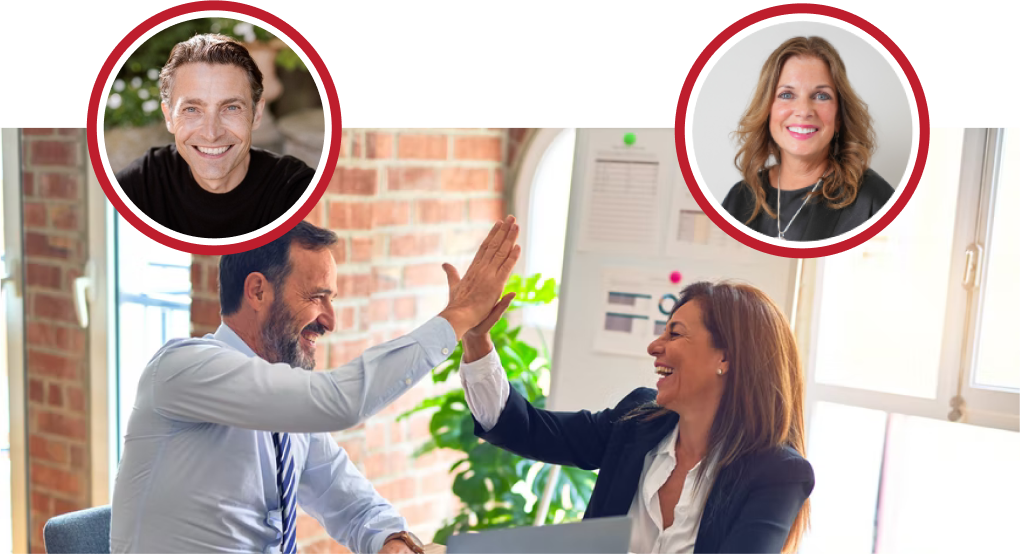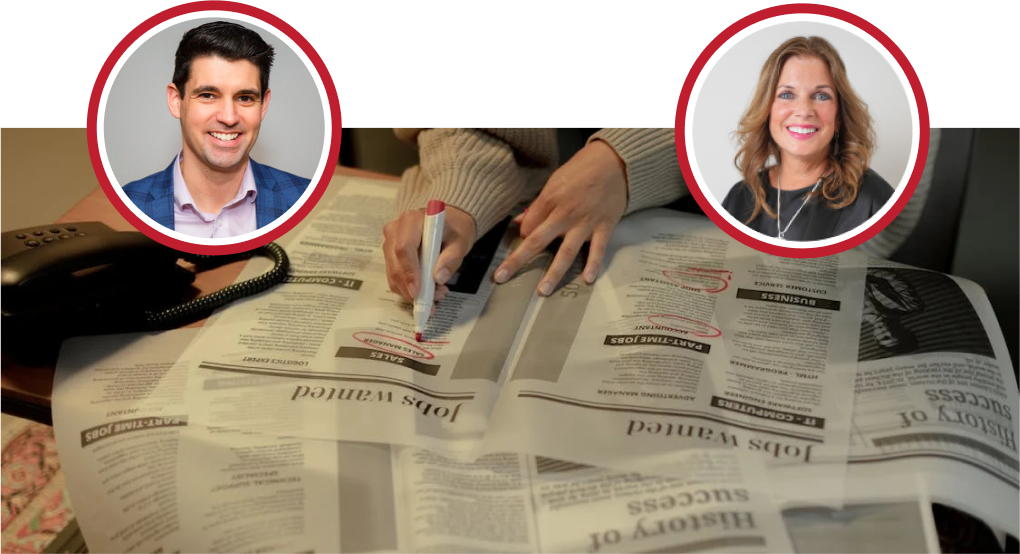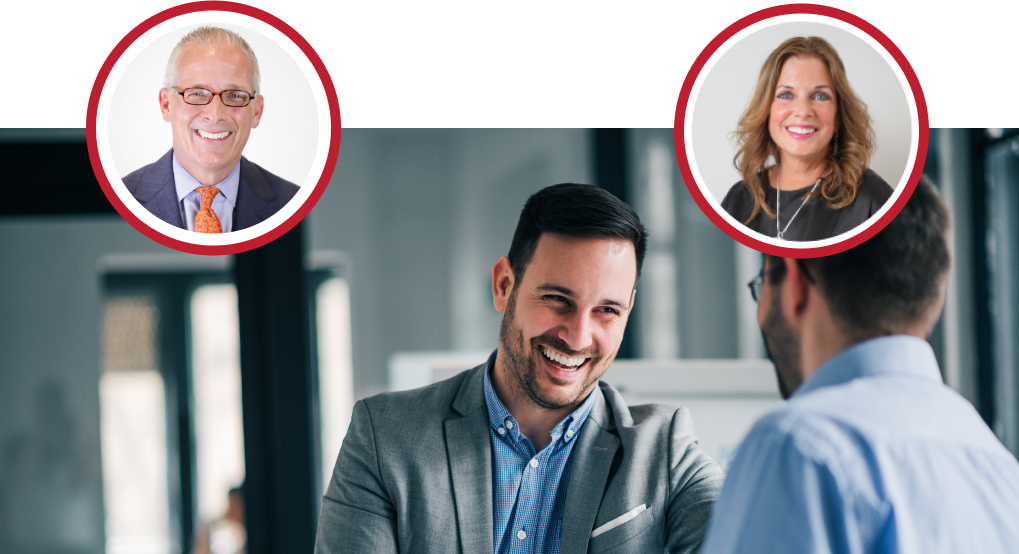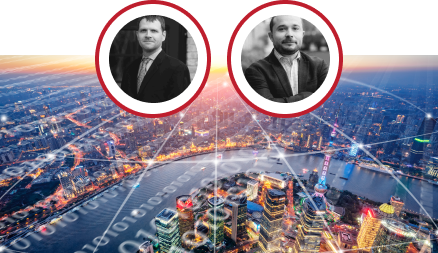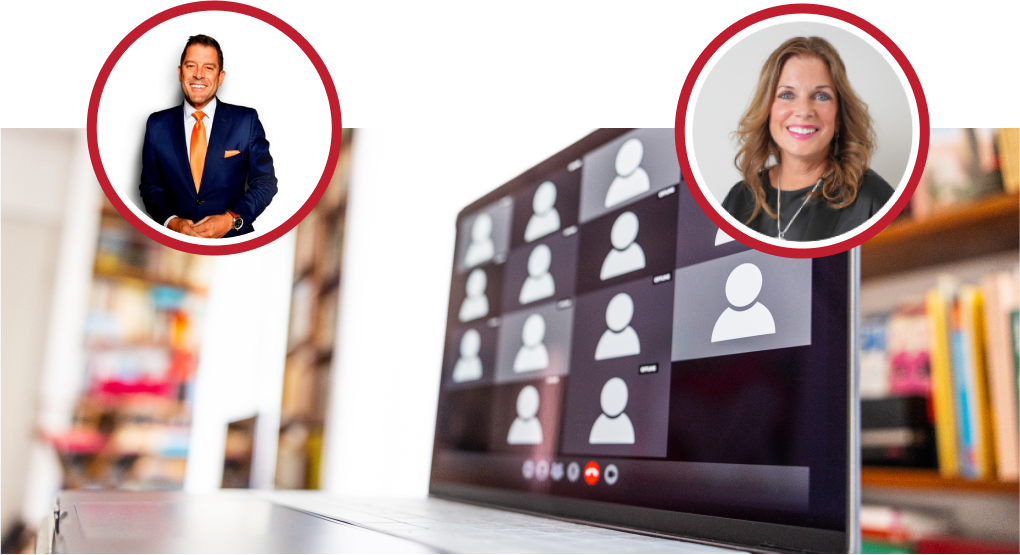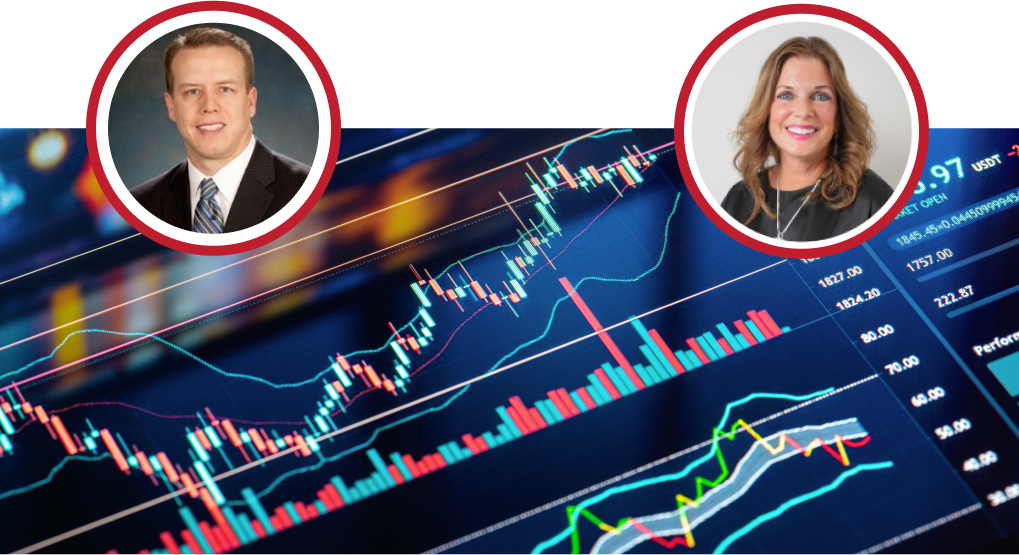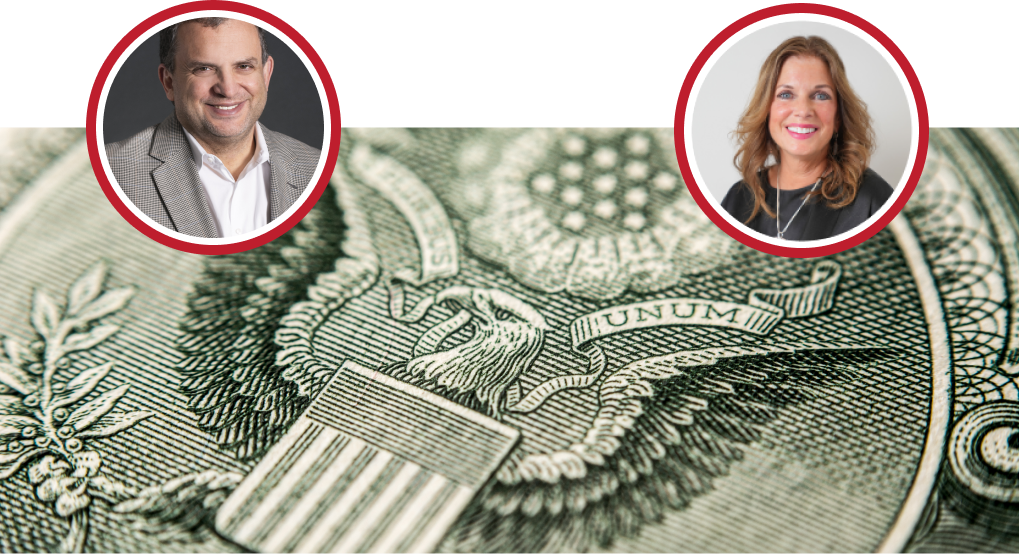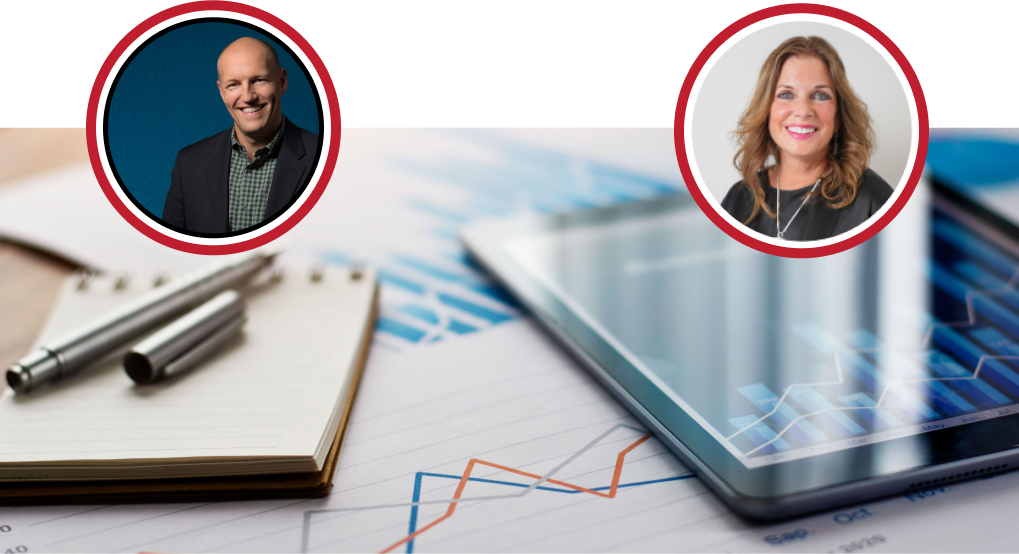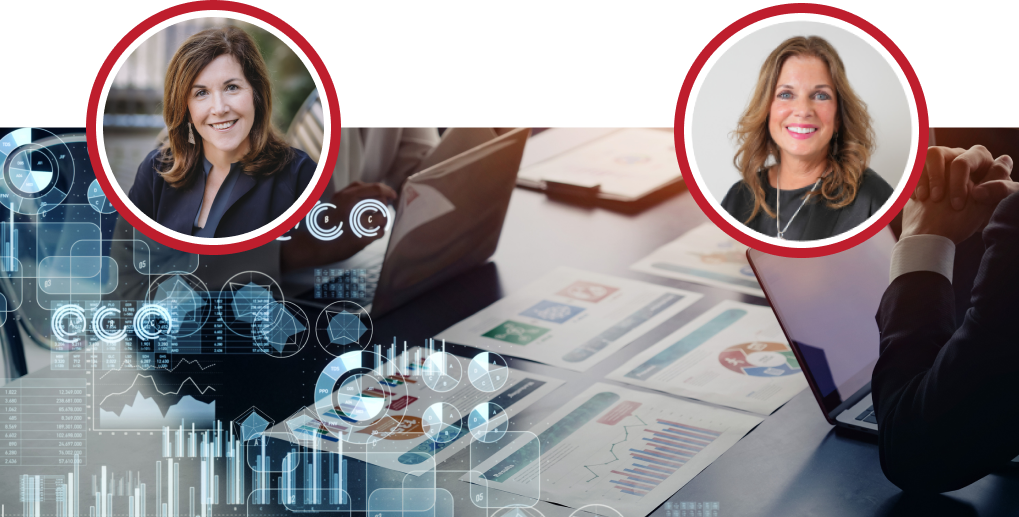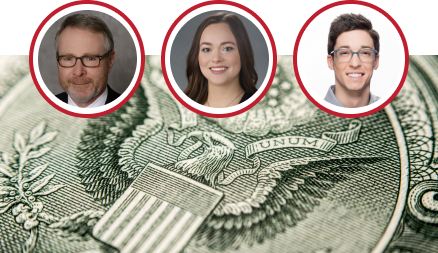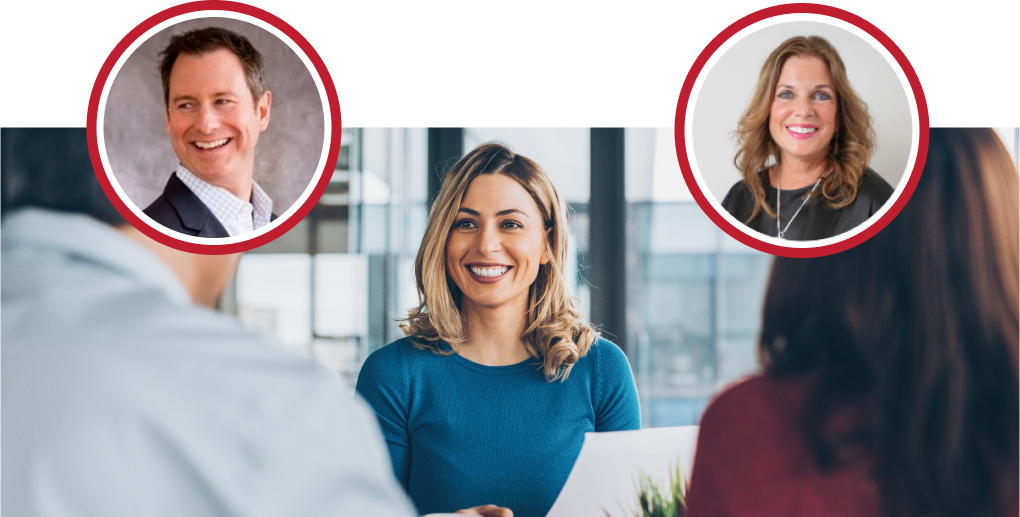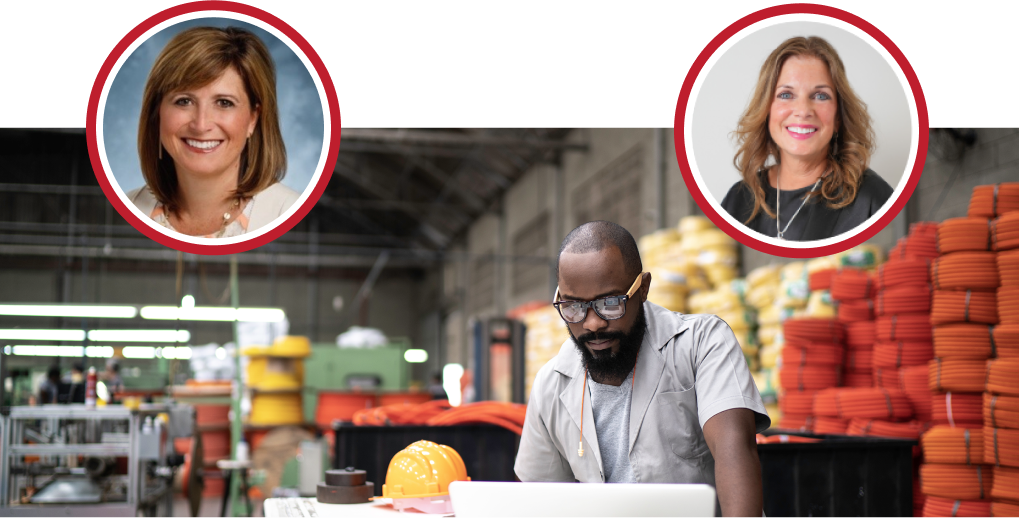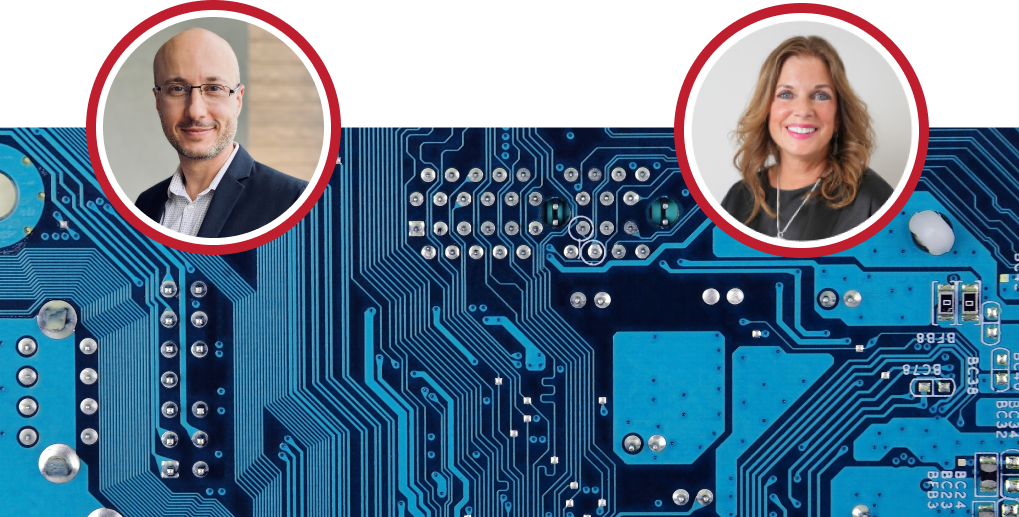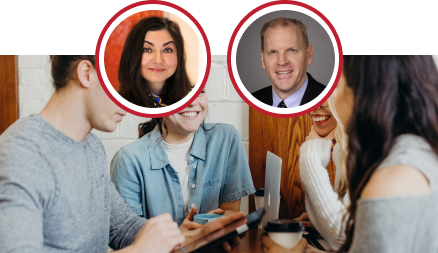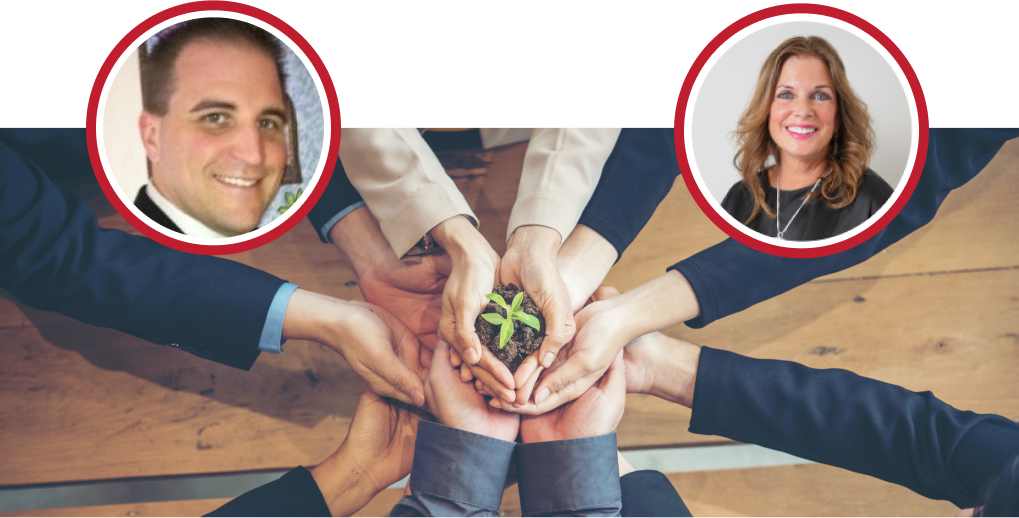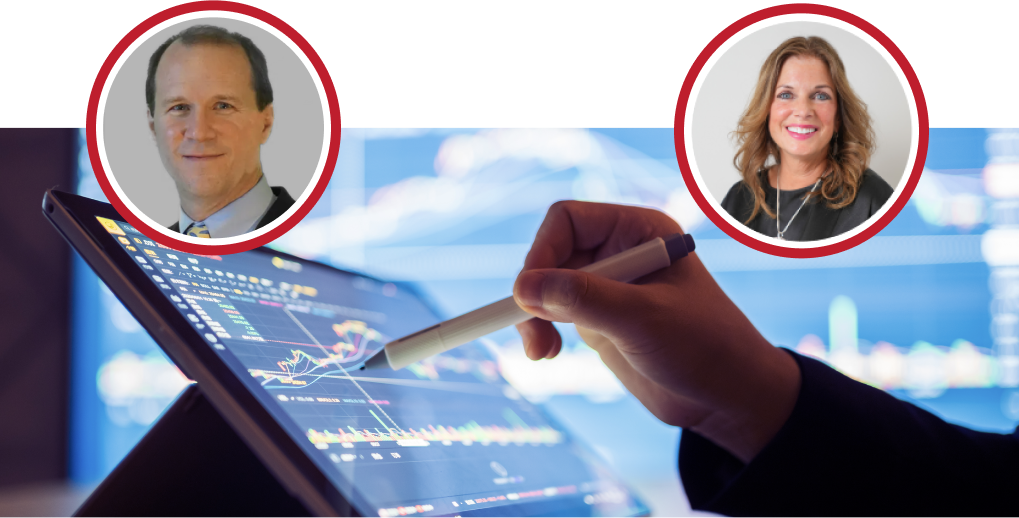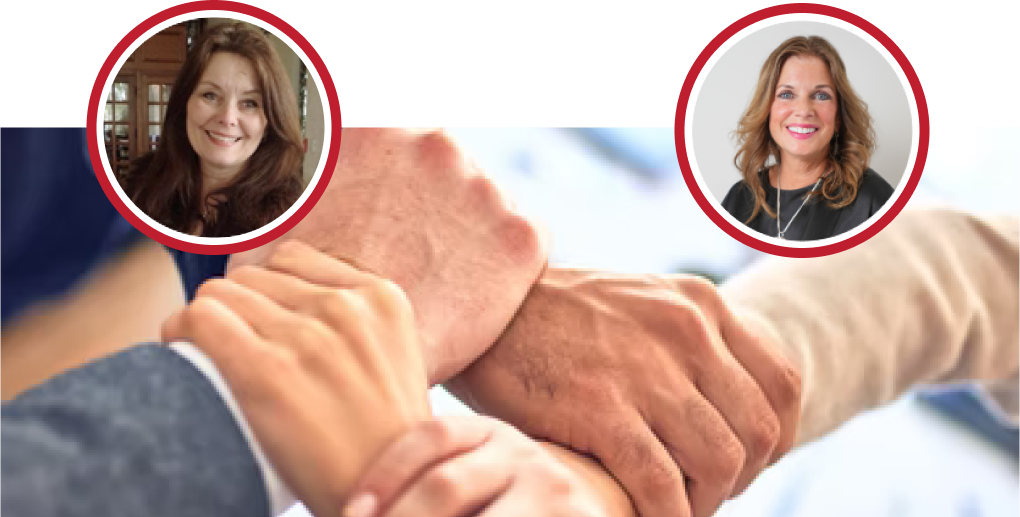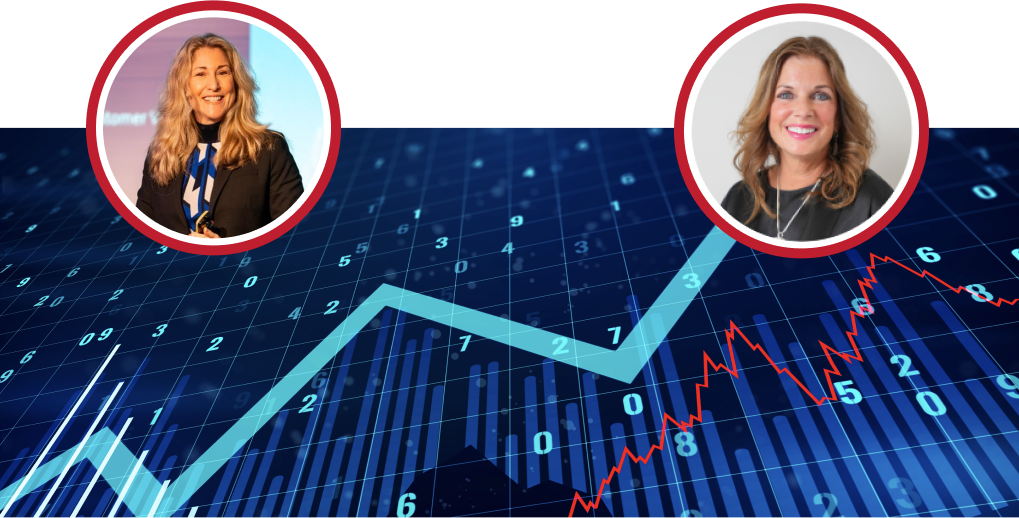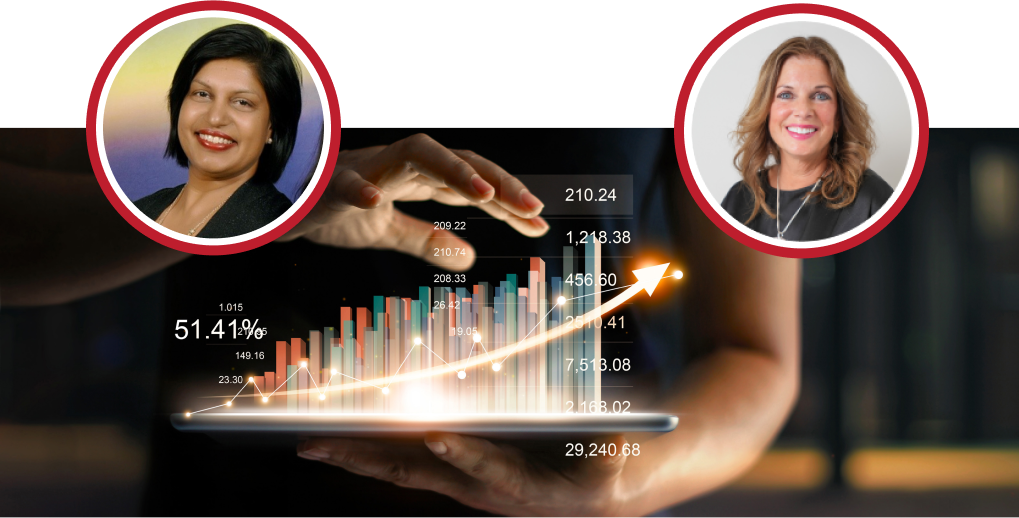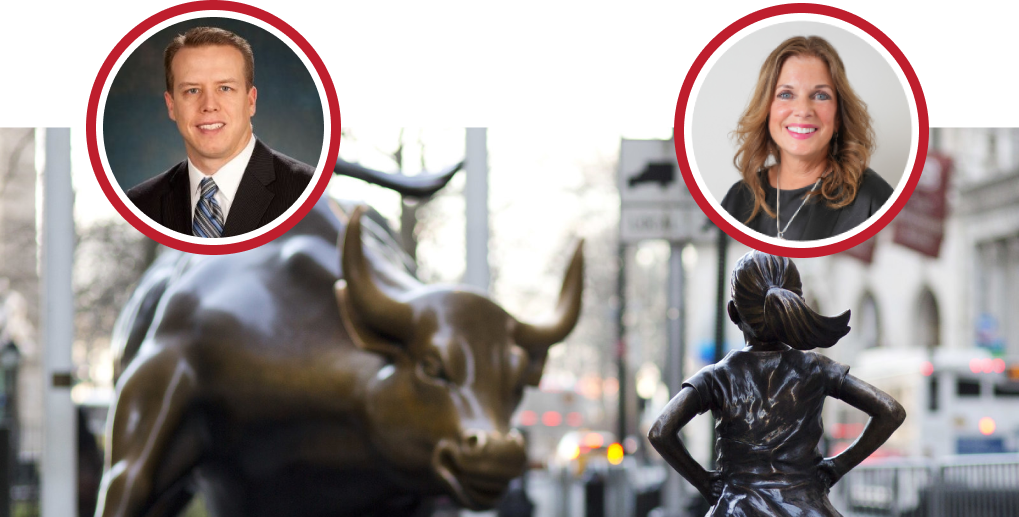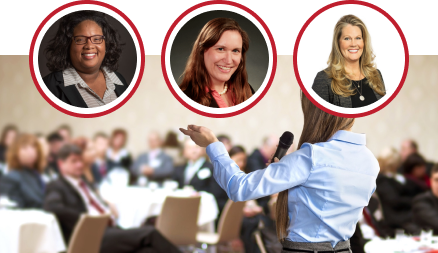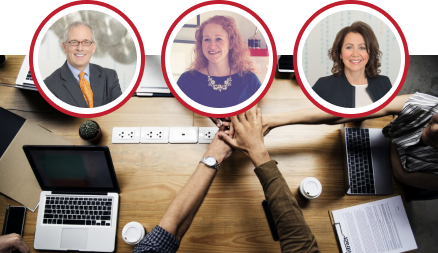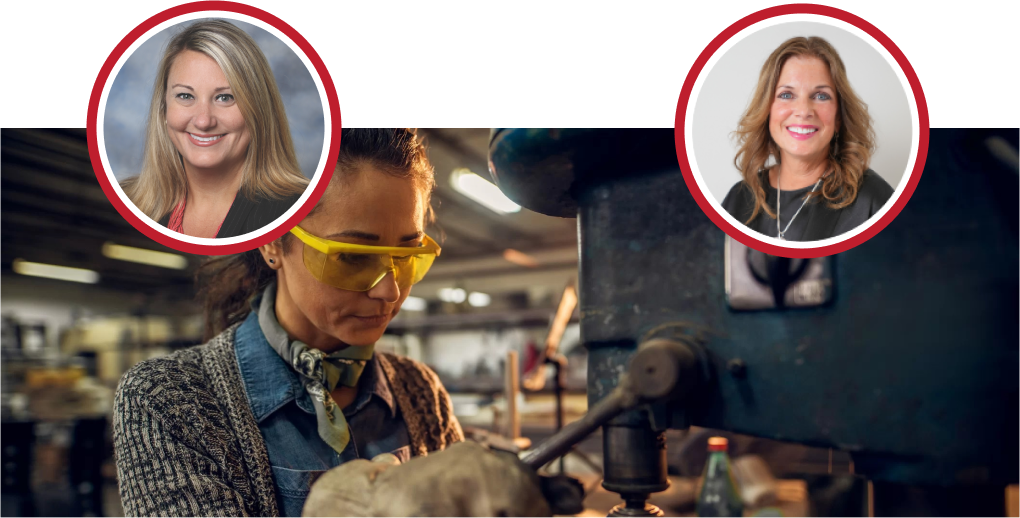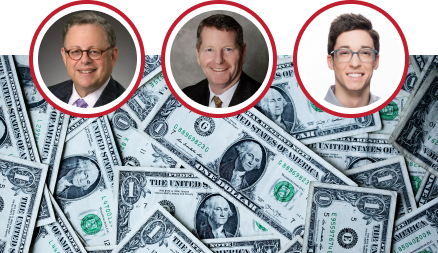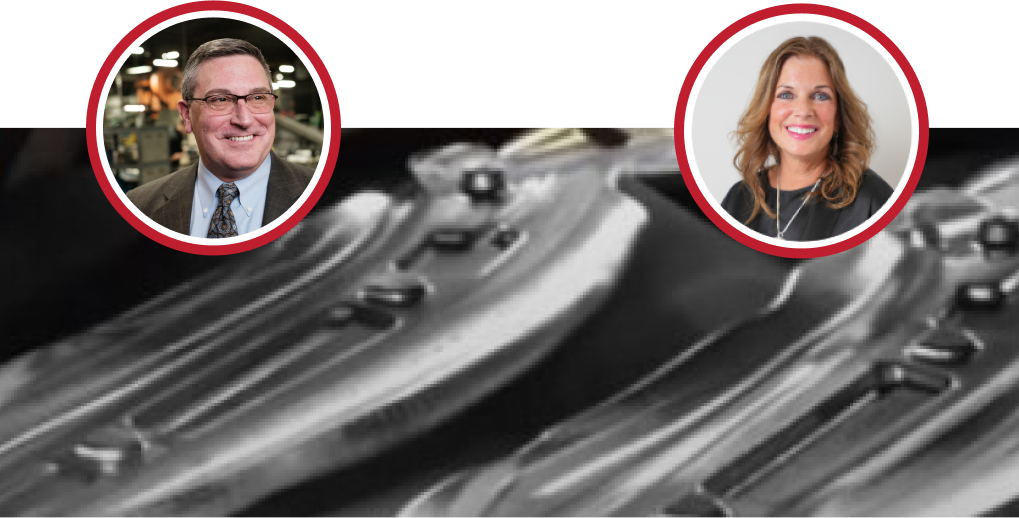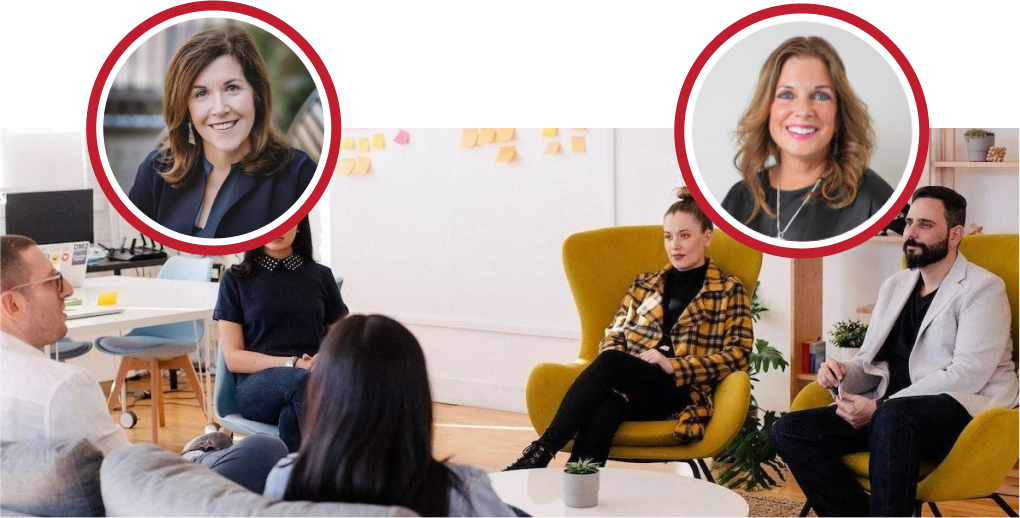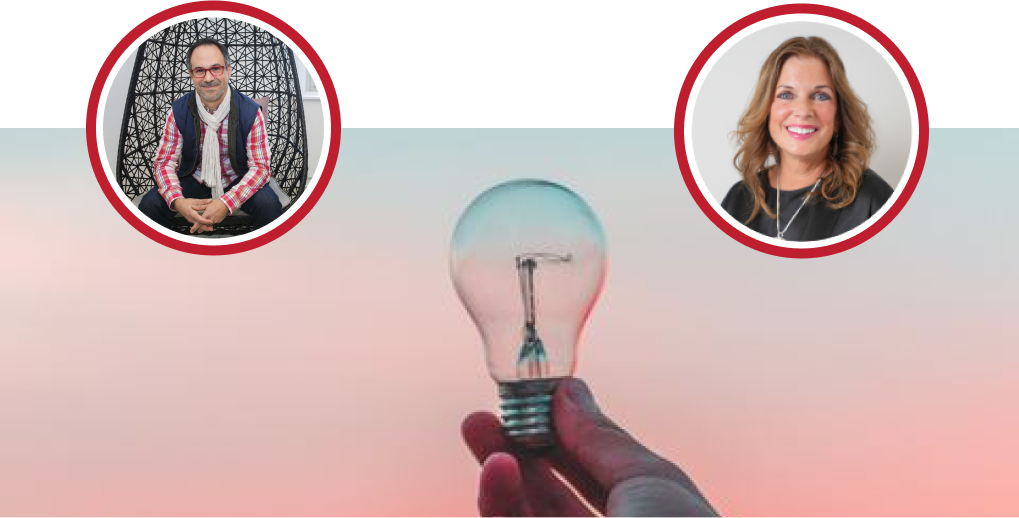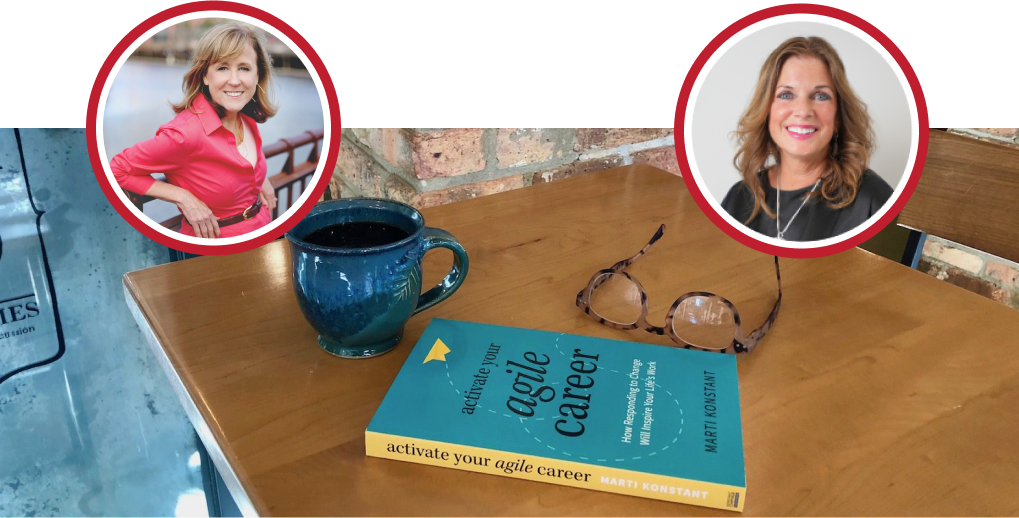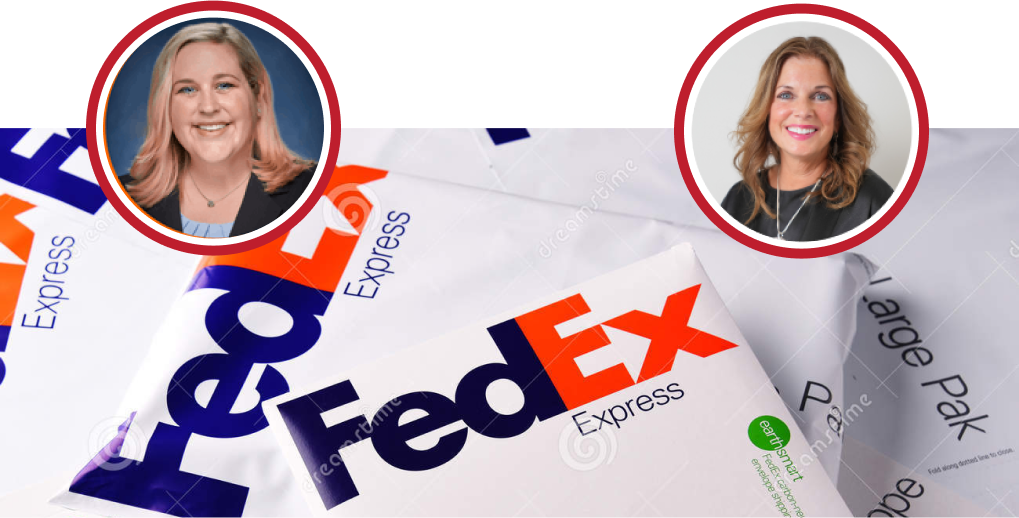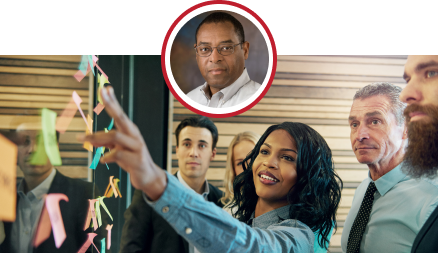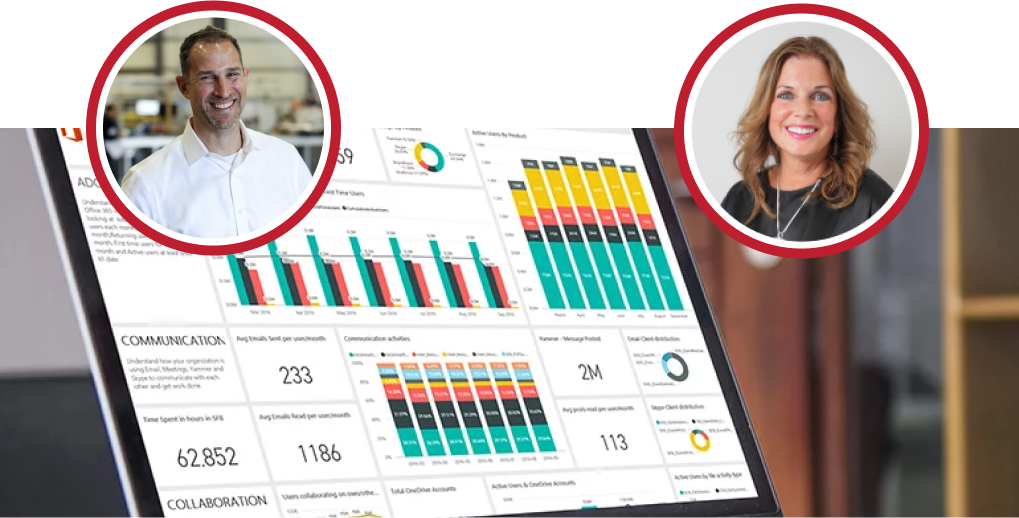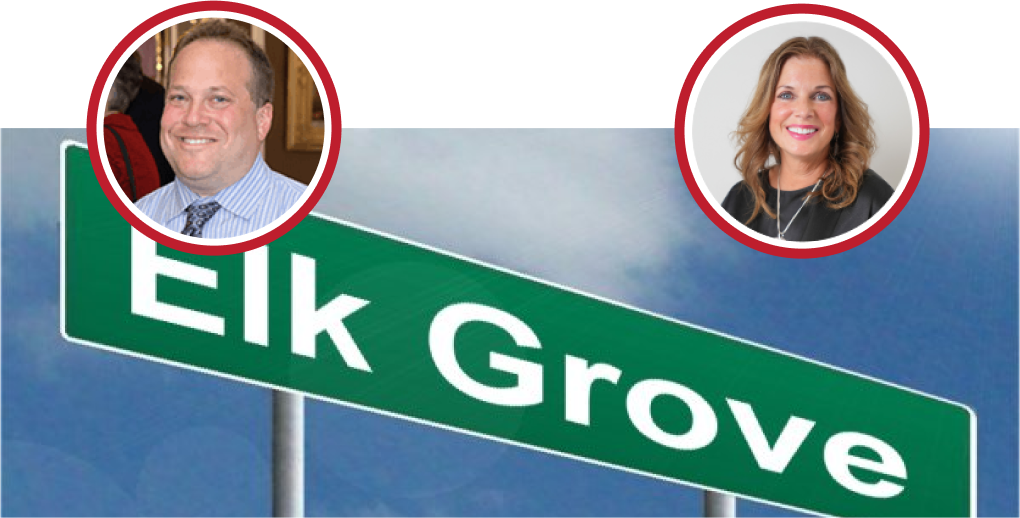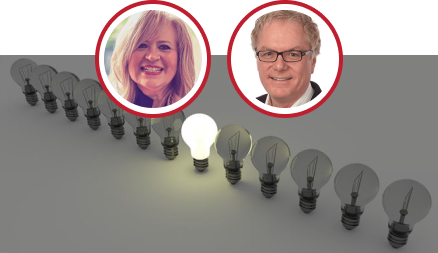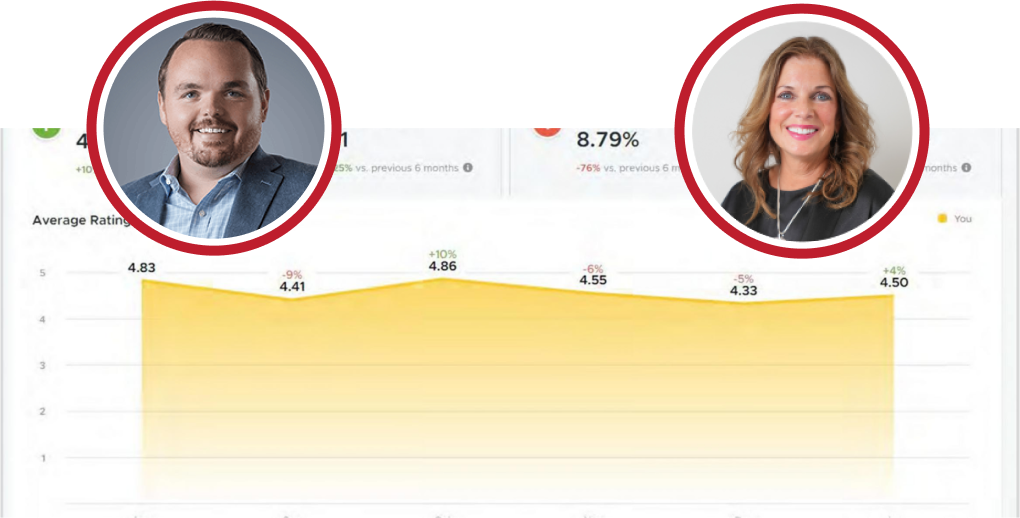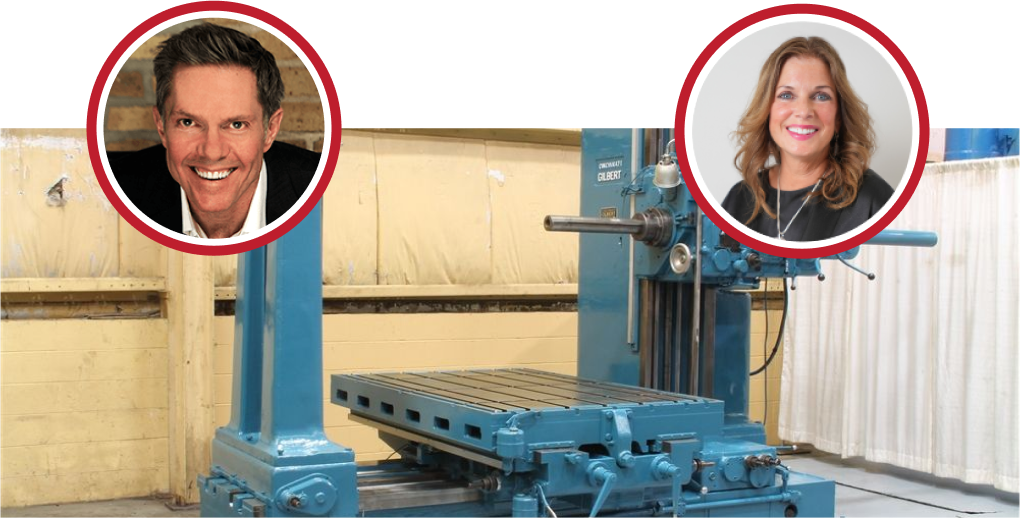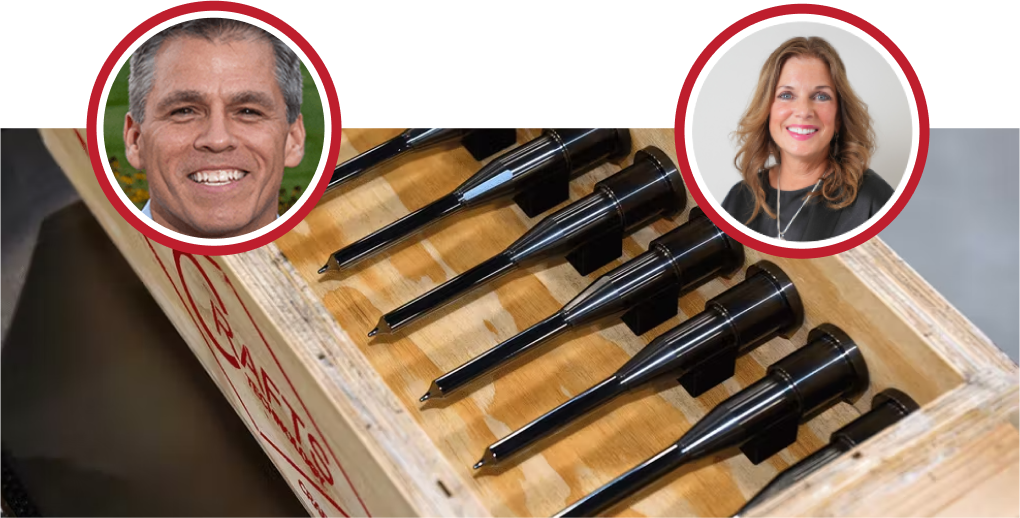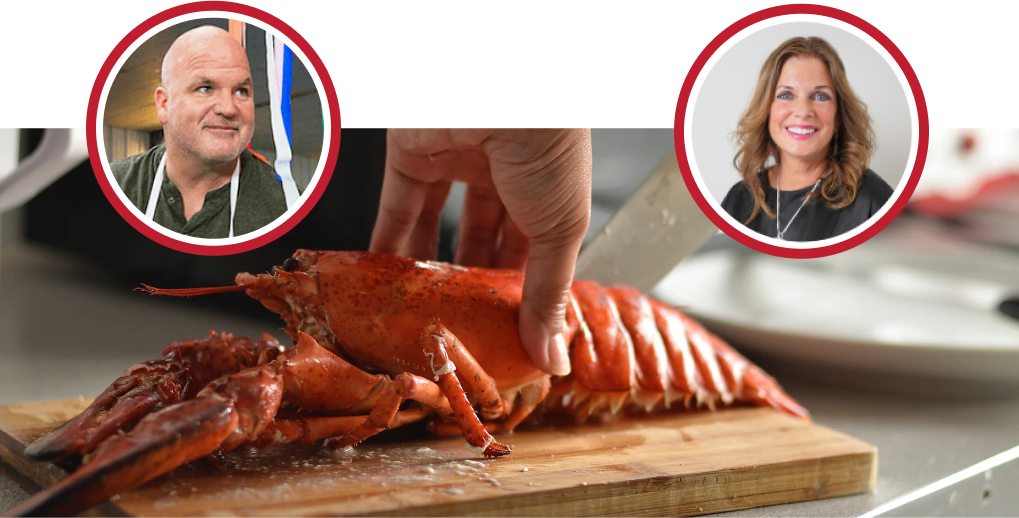Lisa: Let’s go ahead and get started today. So again, welcome everyone, my name is Lisa Behning, and I’ll be your moderator for today’s session. We are excited to have you join us for our November “Business as Unusual” webinar series, where we are talking to badass industry leaders who are surviving and thriving in today’s climate as a reminder everyone is on mute-only status. So, I highly encourage you to use the chat function today or the QA option. I’ll be monitoring that throughout today’s session and asking Allison any questions that come up, so we’d love for this to be a live interactive session. As we go through, we’ll make sure we pepper those questions throughout today’s presentation. Also, as a reminder for those that do sign up for our webinar, the first five people do get that 20 Grubhub gift card to have restaurants. So again, Jeffrey D, Stacy M, Janet M, Marianne N, and Debbie R were our winners today. So excited to see where they decide to order lunch or maybe a late lunch today; depending on how their day is going with that, I’m going to go ahead and turn things over to Kathy Steele, who is the Owner and Principal of Red Caffeine as well as Allison Grealis, Founder and President of “Women in Manufacturing Association” as well as the Education Foundation. So, welcome Kathy, and welcome Allison.
Kathy: Thank you, Lisa. Yeah, I just so love to kick it off. I think that Allison is really befitting of Red Caffeine’s mission building, organizations, or brands that people want to work with, and for really excited to have her on today so Allison, thank you so much for joining us. I’d love you to be kind of start with your journey your career journey; tell us a little bit more about women in manufacturing.
Allison: Sure, so my name is Allison Grealis less and I am the president and thrilled to be president and founder of the “Women in Manufacturing Association” and education foundation I started my career in not-for-profit management and working with trade associations almost now 20 years ago and when I started working with trade associations I had the great opportunity to work with the precision metal forming association they at the time were a 50 year old organization that had mostly members that were comprised of small to mid-size privately held family-run businesses some of which maybe be on the call today and it was amazing to get to meet these family businesses that grew to second third generation organizations and so many of them had women leaders that were then at that time rising the ranks many of them were daughters nieces relatives that were taking over leadership in these businesses and had the great opportunity to work with them to evaluate what type of resources they needed to be successful in growing and sustaining their companies as well as to look to see how could they benchmark and support one another so in working with those metal forming women we soon realized that there wasn’t a national resource for women leaders and manufacturing and so we decided to first connect women through a conference which we called our summit and this year we celebrated our 10th annual summit and what we heard from that conference in the first year that we held that we had 133 women participate from all over the country and all different roles and responsibilities in manufacturing they shared that they were interested in staying connected they wanted to join our organization and to become members so I then quickly created a business plan we created membership options for people to join our organization and then started to create a menu of the different resources and services that we could offer individuals and then the companies that they were affiliated with I often get asked what type of manufacturing career did I have uniquely I was not a manufacturer nor was an engineer I was an English pre-law women’s studies major so to me it’s been really interesting to learn over the course of the past 20 years and tour probably more than a thousand manufacturing companies to get to see how things are made to see the ingenuity and expertise and the creativity and just knowledge that these women in manufacturing careers possess and it’s been so excellent to be able to provide them resources that are useful for them as they’re trying to not only navigate their careers but ultimately we want to see these women advance so to get more women not only to create equity in the industry to have more women represented but most importantly to have more women represented in leadership who can change cultures who can change decision-making and really lead us to more inclusive environments.
Kathy: I love it. I mean, honestly, I, too, kind of fell into manufacturing. I’m not running a manufacturing organization, but I am deeply passionate about the industry it’s; a little bit over 70 percent of our client base are in manufacturing, so I absolutely agree, and it’s been great to be a new member of women in manufacturing for Red Caffeine this year so tell us a little bit more about like the services that the organization provides to women, as well as there, are men involved as well.
Allison: Yes, we’re a very inclusive organization that’s part of our mission is to support inclusivity so we highly encourage male participation and as well men to join as members we know men are really important as allies and so many men occupy the managerial positions that are promoting and are hiring individuals so it’s really important to have male men members as allies and the work that we do so as we look specifically to the programs and services that we offer we’ve expanded those year over year for both our corporate and our individual members I would say first and foremost our main benefit and the reason we got started was to create a community so women’s communities and women were grouping organically or finding resources or support network so first and foremost we provide women year-round access to an online community as well as live communities normally in non-pandemic times where they could meet face-to-face through our chapters to which we have now 27 of them total throughout the country so we provided access to this local community and access and accessibility to a larger national network of women that they can benchmark against that they can start to have dialogues with we have a self-service mentoring program where you can identify maybe someone you want to mentor or someone who you might maybe would like to have as a mentee so we try to make these connections and create a network so especially for those women that are maybe just the one or two females at their facility that they feel like they’re not alone and they feel like they’ve got this community of other women doing similar things and experiencing similar things throughout the country that they can lean upon for support and guidance so our network is first and foremost secondarily we have designed some very powerful formal leadership programs so we now have three of them that we’ve designed and a new one that’s coming online here for us in 2021 and we’ve tried to be very cognizant and aware of the different levels of women in manufacturing and the different needs they have along the way so we’ve looked at core competencies that we align directly with women in leadership and then we’ve taken those core competencies and we’ve built them in at different levels and with different topical at matter and curriculum at different points of a woman’s career so we have an early career program that we call our management development program for those with less than five years experience we have a executive level program that is specifically for executive level women that’s in partnership with case western reserve university called leadership institute and then we also do a leadership consortium which is new this year which is both for men and women leaders in manufacturing and we talk about things like hiring techniques unconscious bias leading innovation so lots of great content and a cohort again that’s mixed with both male and female leaders and our newest program coming online next year is our empowering women in production program so we know often the women who need us most are women on the shop floor women in the hourly ranks who maybe don’t have the accessibility to go off-site to training or to conferences or events so we’re bringing this program almost like a program in a box to companies where they can help deploy this training for their women in production we provide coaching we’ll provide assessments as well as all the tools that companies need to lead these women through a training program and then as well to help them build a cohort of other women in production across the country that they can be connected to so our network our formal leadership programs and then as well does this access to individuals again through our chapters our chapter network is one of our most highly rated benefits so our 27 chapters are delivering local access to plant tours normally access to local training and then also great resources such as community colleges partners in education as companies are looking to recruit and then recruitment resources are huge that’s been something newly that we’ve expanded over the past few years we know all manufacturing companies are not all but most are prioritizing hiring or are struggling with hiring individuals especially those that are diverse candidates so we’ve worked very closely to expand our recruitment resources we not only have a job board called Wim works but we also have just launched virtual career fairs so we heard from companies that hey we can’t be live to recruit we can’t go on campuses so how can you help so we’ve created two virtual career fairs the first one on Monday December 14th where companies at a low cost can have a virtual exhibit and where job seekers can attend especially those displaced by covid and maybe look for a new position or opportunity and I think right now we’re at more than 50 job seekers already signed up and I think we’ve got a little under 10 companies already signed up so we’re excited to see how we can foster these individuals coming together for job hiring and job seeking responsibilities and needs.
Kathy: Wow, that is a lot; like, can we unpack that a little bit? I love the idea of the different levels of the sort of leadership skill development. I think running a company and elevating young people was my first experience; oh, people just don’t automatically become leaders. There does need to be some investment in skills training, but I think that we did get one question that might also give some color to this, so can you talk about like something that that is a real-life case study of how maybe one of your mentorship programs or one of that your leadership programs have impacted somebody’s life is there a story you might be able to tell around any of those offerings that could help us see the benefit beyond I think it’s clear from the different levels I love how you split it out but could you tell us a little bit more of a story?
Allison: So, two people often come to mind so that leadership institute program for women in manufacturing and stem that we do in partnership with case western reserve university that’s now in its sixth year our sixth class starts in February of 2021 and I audited the first two years of the program and there were two women in particular that were in our year one of the program and again it was more intended for those who had some type of managerial experience or responsibility again more leaning towards executive women but there were women in that first year of the class who were probably at more of the early manager phase of their career as we were first getting started with our cohort and companies really wanted to try it out and we were also looking for women to be part of that first class and so one woman was an office manager for a small size aerospace manufacturing supplying company in the south and she had this office manager position and responsibility but had lots of appetite to grow in her family-run business it was a family-run business she wasn’t a family member but had interest again in trying to rise the ranks and someday even aspire to have a leadership role in the company so fast forward six years later she completed the program that year she built a great network and a cohort of individuals that she participated within the program they actually still to this day do monthly google hangouts where they all hold each other accountable for their goals for the priorities that they set they help again coach and mentor one another and six years now later she just signed her ownership papers to be co-owner of this small size company in Georgia and she attributes much of that to the fact that Wim grew a network for her that she never would have found otherwise she not only went through the program completed the program which does include things like 360 assessments and s keys it included things like again coaching both from the peer perspective and executive coaching gave her lots of great kind of knowledge on how to lead successfully how to manage others leading with expectations lots of great kind of content but it was that network that I think was so very powerful for her as a participant to have that group of women about 20 plus that were in her first year program that she could go to along the way for advice and guidance and instruction to say if my ownership is my goal or if I want to be I’m an owner leader of this organization in the next few years how do I get there so she had other women leaders from other types of organizations that she can benchmark against and there was another woman in the program that year two who was with one of our corporate member companies and she at the time was a manager level individual for her company she had aspirations to grow and in the six years since completion of the program she’s grown to a senior director at her organization she attributes Wim as one of the major factors for that that she gained the confidence to ask and to feel ready for positions it did not feel like she had other how to have everything checked off the box to be eligible to buy her position and then as well again that community she’s part of that group that still meets each year they meet in person one or two times a year and then they do those monthly hangouts so again that peer network is so very important that’s why owners leaders all over the country we look for others we can talk to figure out solutions and to not waste time kind of recreating the wheel if others have done so successfully so I would say those two graduates and we have many more today we’ve graduated more than 120 women from our formal leadership programs and we’re so very proud of all of their accomplishments and I’m so very proud of how many have been promoted and have risen the ranks since completion.
Kathy: Fantastic, and I think I couldn’t agree more that having peer leadership groups or peer groups to go to fast track your learning or share experiences have just continued to propel my career forward, so I absolutely think something like this would be so beneficial to so many organizations that just don’t have that ability to do those types of programs in-house so let’s flip gears a little bit and talk about some of the things that you’ve seen this year like what have been some of the big kind of trends or what the big impacts that you’ve seen your membership organizations went through in 2020?
Allison: Yeah, so one of the things that we quickly did our organization about half of what we spend our time doing is live event production so providing people local opportunities to connect and to come to national programs live so obviously with pandemic we had to pivot pretty quickly to virtual so as we did that we knew that there would be kind of a disconnect that people might be still hungry for making connections with their peers all over the country so we created community chats that were held for five months in which we were providing people a platform and a forum that they could come to to have advice and support during these very changing times and then as well to be sharing best practices from company to company and individual to individual as to how their companies were responding to the current pandemic so we created that as a as a weekly vehicle for people to connect to dial in we had knowledge experts that joined us and it was amazing to hear again companies of all different sizes how they were impacted by the pandemic and how they were responding so we learned many creative techniques that companies were using for traceability for example a virus and for contagions within their organizations we heard how companies and leaders were dealing with the fact that it’s difficult to collaborate or communicate or maybe a little bit different ways to communicate and to collaborate given kind of the virtualness of the current day so lots of great practices were shared and I think companies again and the individuals that participated benefited from having a support network that they could go to to hear real time what are people doing to adapt how are you thanking the shop floor individuals that don’t have that luxury of working from home and are still going in the same hours if not more hours because perhaps they were connected to PPE or some of the response products that the pandemic brought I’m hearing creative solutions of how companies were engaging and thanking those employees and keeping connectivity with those that were kind of an office administration as well as on the plant and production floor so that was really useful and what we’ve heard from companies is that companies have all been impacted differently some companies they were deemed essential so they’ve never stopped and actually their volume has increased perhaps over the last nine months so their work and life experience post and current pandemic may look very different from a company where their volumes dropped off and where they don’t have the same types of levels of manufacturing that they did prior what we’re hearing is that companies of all sizes have learned to adapt there’s been a large jump to using technology to obviously continue business and to accelerate business and so I think those are really good things and I think again hiring has been a huge topic that has been brought up by companies that they all are still most or if not all are still looking to hire different roles and responsibilities and so they’re having to be creative as to how they find and train and onboard these new employees.
Kathy: Yeah, and to that point, with your upcoming career fair, are you going to are you looking at candidates across the board from the production floor all the way into management positions? Is that the type of recruiting experience that we would expect if we were attending or participating?
Allison: Yes, all levels of manufacturing talent are being looked for, and the companies there’s an, I think, a whole virtual explanation on our website as to how the fair will work, but it’s an opportunity where companies can post what specific positions they’re trying to fill then companies individuals who are seeking can kind of match with whom they want to talk with, and likewise companies can match whom they’d want to talk with as a candidate.
Kathy: Fantastic, thanks I do want to comment I attended a number of your connect events and in a time when it was so there was so much social friction going on the one takeaway I had was that it was the most incredibly diverse group of women I’ve ever been in like a virtual room with there were people from all over the nation at different career levels there were people from Africa and other other countries it was just like kind of a an interesting side no from just the information that was shared it was just how diverse the room was I really thought that was a pretty cool experience so let’s as we’re talking about diverse experiences and everybody’s pushed to to build organizations that embrace different cultures different people even beyond just women I absolutely am disturbed to see this metric around the fact that maybe one in four women are are thinking about deep prioritizing their career and their career advancement just based on some of the experience of covet I actually heard that same similar stat at a compensation conference last year and it blew my mind I never even thought about women’s choice between family and work and the impact it has on their career advancement but talk to us a little bit about starting at the high level what are the things that you are recommending or seeing in terms of helping organizations with their diversity initiatives and maybe share a couple stories that of some of your members that you’ve seen in terms of being successful in this area?
Allison: Yeah, I definitely will and just as a side note so I mean that study that just came out the 2020 women in the workplace study that was produced by Mckinsey in partnership with Lena and is a great report and people should read it if you haven’t yet so it really gives you a clear perspective on what could be some of the unfortunate negative outcomes of pandemic aside from safety and public health there’s going to be an impact on women in the workplace and what they found through the survey is that I think it was one in four women potentially would be leading the workplace I think two point I think two million women were quoted as potentially leaving the workforce total as a result of this this pandemic and how it’s wreaked havoc on many of their lives as they’ve tried to integrate their personal and their professional and interestingly I think that the stats said that work work-life flexibility was denoted as the largest issue that was raised for them as to why they would potentially not stay in the workforce and interestingly we’ve done some research with Thomas one of the leading minds as it relates to industry data and we have a release of that data coming out in December but a similar finding was there as well this work life flexibility there really is no I don’t think true work-life balance but that flexibility that organizations have to look at as to how do you blend the personal needs of an individual that’s part of your team as well as their professional needs and their aspirations is critical and so I think it goes to the conversation that we’re having with companies right now and that we as a community are having just generally about diversity equity and inclusion and how can manufacturing companies make their companies more adaptable and create cultures they’re inclusive of people from all different demographics walks of life and backgrounds so we we’ve talked to many companies most companies are aware that something’s got to change or maybe something’s got to give within their current organization to not only retain their talent but to attract new generations of talent to their workplaces so we’ve created lots of opportunities for companies to share best practices so many companies have had this on their radar for quite some time and have been doing an excellent job as it’s related to recruitment and retention and advancement of diverse individuals within their organization and we’re sharing those best practices to other companies so that again people don’t hopefully have to start from level zero but instead can say wow a company similar size to my was successful in executing this program perhaps this is a place to start this is where my company’s at so in terms of recommendations we help companies as they assess where they are on their d e and I journey we also help connect companies with other companies that they can learn from again we’re sharing best practices through different social outlets and through webinars to our other members so that they can have a playbook or perhaps at least some guidance as they’re starting this journey and then as well we have a de I task force that we’ve created so we have a task force of leaders in industry from presidents of manufacturing companies to those in human resources and talent development from some of the leading companies in the country and globe who are helping us develop year-round resources that can be online both through on-demand sessions and learning workbooks so that we have an even larger repository of information that companies can use as they’re starting their journey or continuing their journey when companies ask us how do I get started I think first and foremost that doing that assessment kind of where is your company at kind of looking at the strengths and weaknesses of your organization as it relates to I’m supporting those that are diverse often a starting place is creating a women’s erg group or employee resource group or affinity group and then creating similar groups for other populations in your organization and then as well I’m kind of leading from the top and having your leaders really committed to wanting to espouse a very inclusive and diverse organization and there’s lots of training best practices as it relates to kind of making your leaders ready to have that type of culture so there’s lots of great resources that we offer to companies and or individuals and we’re happy to share those with others.
Kathy: That’s great I mean I just did a presentation on employment brand for now and that was one of the pieces of information I shared as well is that it’s not you can’t go from zero to a hundred overnight in terms of your approach it really does have to be a mindfully authentic journey that’s that fits your culture and your organization and the other note is that is as we’re thinking more broadly about workforce there’s a lot of underserved parts of our of our of our world that we are not tapping into that could be great candidates all across the different spectrum of job openings that are in these manufacturing businesses so I love that you guys have sort of a road map recommendation I think that’s the biggest piece is what we saw a lot of businesses do is jump on a bandwagon earlier this year and that’s just not good enough it has to be really intentional and authentic to who your organization is and if you’re not at a hundred percent in in your plan you there’s a place to start but I do think it’s overwhelming for businesses and it’s also you don’t want to go out there and say something that’s going to to get get a negative response so it’s a little bit challenging for leaders too to make those over statements unless they really feel like they can live with it long term. So, thank you for sharing.
Allison: You can’t you can’t just create what we’re seeing is again as you said I think companies are dramatically trying to take quick action and you can’t just create a director of diversity and inclusion and call it a day and I think that’s what we’re trying to help companies that once you’ve made that investment for let’s say in a position or a group or some type of initiative you can learn from others and there’s other ways to make it a real authentic endeavor one of the things that we’re doing is we’re holding a human resources virtual roundtable because so many people are in the same place they have now a corporate initiative or a corporate priority yeah to focus on this yet they need those kind of okay and now what so the goal is to bring together these people responsible for hiring for leading now d e and in their organizations to talk about what are others doing what are the budgets that you have what are the key initiatives that you’re kind of using to further this mission in this endeavor. So again kind of sharing authentic and successful tactics is really important from one company to the next.
Kathy: Yeah, I just was going to say I absolutely agree we did get a really great question about like senior leadership, and so the question is about where do you tap into or start a recruiting process for looking for a female leader that is ready to become a CEO or president of an organization how would suggest that search gets approached? Do you have any thoughts on that?
Allison: A search internally within the organization like to identify a high potential person who could have.
Kathy: Well, I mean, I’m sure there’d be an opportunity to think about it both ways, but I feel like it was more about like how would you conduct a search? More broadly than just your own workforce in terms of, oh, sure, you hire a senior leader.
Allison: Yeah so I mean I ha I have to not laugh but we the number of calls that we get is kind of amazing of individuals who are on the search side looking for executive women to lead organizations plans facilities global operations there’s a lot of individuals searching for talent and so I would say that some of the best resources are looking at our networks so we don’t prohibit people from going within to our public LinkedIn group which I think is now more than 9 000 subscribers to it there to perhaps socialize or get to meet some of the leaders in manufacturing that connect to us obviously a benefit of membership is that you have access to our directory so if an individual joins or a company joins they have access to our directory to network and to meet others and then our job board is probably the best resource so we have a job board called Wim works and it allows companies and individuals perhaps even on the search side or on direct hire side to post positions to again look at the applicants that we have there who are open to new opportunities so Wim works can be a great resource as well but I think externally with search it’s really important for if you’re in that role responsibility to make sure that you’re properly describing and outlining that position there’s lots of research done about how are you authoring that position are you crafting in such a way that it’s that’s going to be attractive to the types of candidates that you’re looking to hire I mean there’s lots of research done just even around the words the verbiage used in a job posting or an opportunity posting that it can turn off certain types of candidates or it could be more attractive to certain kinds of candidates just in the way that you’re word smithing that posting or opportunity so I think looking at that I think looking to where you’re posting the search and then kind of our network and our community is large and so that’s a great place to meet some exemplary women who could potentially fill positions that companies are looking to fill.
Kathy: Yeah, but I love that people are considering it. I don’t think that you want to be limiting a search to just one; that, a female leader, but I love that’s a consideration set to trying to think about that as in and to your point earlier lets it could be a real culture driver to have that more diverse group of people leading your organization at many different levels so as we are starting to look into 2021 what are some of the things that are kind of topics that are coming up for you what are you guys seeing in terms of priorities for 2021 in terms of your community as well as the businesses that are included in your community.
Allison: Yeah. So, I think that some of our key priorities as an organization obviously we are very in touch with our member community we have a board of directors that is 22 persons strong for our association and then an education foundation board that helps us prioritize funding for the right educational resources and training tools for companies and individuals and as we look into 2021 we really see a need to highlight innovation automation technology to help bring to companies even more resources that they can use to accomplish business and employ retention and development in potentially elongated different times which are a bit constrained so that’s a core focus for us we’re also looking obviously to provide more resources to companies as it relates to development so the launch of our new women in production program and then from their figure out what are those other resources that that organizations companies need as it relates to people development not all companies have budgets where they can create their own academies and their own institutes so we’re really trying to create affordable options that companies of all different sizes can use and plug into to develop their people so that is a key objective for us next year also organization we have lots of chapter growth so while I said we have almost 30 chapters we have six more in development and now there’s interest for us to explain expand globally so we’re very excited we’ve had now international participation in many of our events and I’ve had a great opportunity to speak at a few international manufacturing conferences so we’re trying to figure out kind of what’s that next step we know we have a growing population in Canada a growing population in some different parts of the globe so trying to figure out how do we support women in manufacturing expanding so again that we can provide resources to companies and individuals all over the globe so we’re really excited about that as it relates to companies and their certainty or uncertainty for next year we’re hearing positive things from companies that while this year was tough they’ve adapted they’ve made potentially some cuts or they’ve created some new methods and workflows of innovation that has allowed them to sustain or thrive during these times so I think we’re positively optimistic that next year companies will continue to support us to continue to support their female talent and kind of work in partnership to continue our growth.
Kathy: Yeah, and I know you mentioned that you got that survey coming out; what could you share? Some of the types of pieces of information that are going to be shared out in that survey that you’re sending are going to have available in December?
Allison: Yes. So, on December 7th, I think it is we will release our first ever in partnership with Thomas; it’s a diversity equity and inclusion benchmarking study, so it is meant to be now an annual study that we’ll do year over year so that companies can see how they’re performing and then also compare it to how other manufacturing companies are performing and the things that we’re looking specifically, relate to recruitment techniques retention and internal energy internal leadership programs and investments that they’re making in people development and then as well their advantage advancement trends and success so the results will be released in early December and we’ll share the findings and then if companies are affiliated with us through corporate membership they’ll have a special expanded version that gives even more breakdown in detail for them again that they can use, hopefully as the year over year look at their performance in attracting retaining and developing their female talent.
Kathy: Yeah, fantastic I know that we’ve been, in terms of some of the employer branding programs, we’ve been asked about that kind of data and research because companies are looking at we’re here, or we think we’re here we don’t really know what the rest of the marketplace looks like so I think that’s going to be really valuable insights that will help every organization level up so thanks so do you have to be a member or do you have to be a corporate member to get access to a survey or is that something that you’re going to be sharing more about?
Allison: That will be shared with it with other ones so it’s an open survey and study that we’ll be sharing similar to the Mckinsey women at workplace it will be accessible by all but again as a corporate member you’ll get some special benefits and some special expanded information I think some of the most telling things from the survey that people will find as we get into kind of into the detail the minutiae of what are those things that are drivers for keeping female talents or what are the things they value in their organizations what are the things that are missing so what are those things that your organization could do more successfully or implement that would keep you or want to have you kind of continue your career with this company so some really great things that I think companies of all different sizes can have as takeaways and deliverables as they look again for retention and recruitment and there’s a whole section on recruitment and what are companies doing and kind of what’s most successful so I think some really good information for companies.
Kathy: You talk a little bit about the data pool. Was it, lots of different size organizations. How, who was the survey sent to?
Allison: Yeah, so it was sent to men and women in the industry and all different size companies, and part of the output will be some information on the demographics so who completed the survey where they have located the size of companies and sales so that you’ll get to kind of see the big large pool that we had that participated.
Kathy: Fantastic, well, thank you. So, I do want to start to open it up to some additional questions; we’ve gotten some really meaty ones so far. So Lisa, is there anything that else that has come through?
Lisa: There’s one great question, Allison. When you were talking about how next year for 2021, WIM is looking to expand, one of our participants actually asked about expansion. So, is there a way to find out if there’s a chapter in your area or if it’s one of the expansion chapters, or maybe they’re interested in starting one, so could you tell us a little bit more about that?
Allison: Sure, so definitely reach out to us; we have a team member Audrey Ein who leads our chapter marketing and development, so on our website, you can see a current map and a listing of all of our active chapters, but Audrey and her information are online you can reach out to her direct to either get connected with an existing chapter or with one that’s developing or just to start a conversation with us about perhaps I’m starting a new initiative in your local area.
Lisa: Great, thank you, so go ahead, please no go ahead, Kathy, I found my question that I had written down here so.
Kathy: Yeah, I wanted to kind of step back because we’ve talked a lot about the programs, but I want to make sure that we were able to talk about specifically, what are some of those strategies as somebody joining the organization how would they approach navigating like career advancements I understand joining the cohorts but is there some other ways that they might tap to advance their career or tap into building a mentor relationship or additional to support.
Allison: Yeah. So, I what I’ve learned in my 20 year at least association career and I think through my whole life is relationships really matter and so our organization tries to foster that through all that we do is that making a professional personal relationship can make all the difference in your career and your personal life as well so what we hope is that someone who maybe is looking to grow their career grow their network if they were to join us obviously we’ve got our live network of individuals that people can connect with whether it be through our member directory or our communities that we have on social we’ve got Facebook groups and LinkedIn groups and we’ve got kind of followings and all those different spaces it’s a great opportunity for an individual let’s say if you want to find a mentor to navigate our directory find someone who’s maybe in an industry that you hope to aspire to be in or in your current industry that you want to grow your career in and to try to set up a mentoring appointment or just a discussion with that individual obviously meeting live is a great opportunity once we all can do that again at conferences we try to facilitate live networking where people can make connections that are useful for them personally and professionally we’ve got our leadership programs that are great if people want to enroll and they’re at a certain level of their career and they have kind of that corporate support to participate in some of our more formalized programs we also do our virtual learning series which is a great way for an individual to expand their knowledge base so they can on a monthly basis as a member no cost rate you can participate in a live learning session I think we’ve got one in a week or two and what’s nice is that they’re all recorded and then placed into an on-demand learning library so that any of our members at any time can access the learning library to learn for example about emotional intelligence or navigating customer concerns or how to build kind of your negotiation skill set so lots of great again development tools that are more micro and bite size that someone who’s trying to advance and to grow their expertise can tap into on demand at their leisure that can definitely help them professionally so I think the other thing that we try to highlight in our conferences is sharing those best practices and those panels so that a younger woman for example in in her career can hear from others about how they’ve done that how they’ve executed how they’ve risen and maybe learn and not have to make some of those same mistakes along the way that some other women had to experience.
Kathy: Yeah, I’ve heard most recently a lot of people investing in personal like an advisory board so having a and I guess I never really thought about that, but I think that’s also, a unique way of getting good feedback that is both career and personal advice. So, I’m sure all the cohorts probably bleed into a little bit of personality too, which is hard not to.
Allison: Yeah, so these are really important; the personal advisory boards, we have groups as well, so like similar to a Vistage or a local group that you may participate in, we have special groups we created a few years back just for executive women so knowing that women who kind of have that manager director supervisor role often maybe can use even more one-on-one guidance with one another so we’ve created those they’ve been very successful they meet two times a year typically in-person they have a facilitator actually it’s me for the facilitation of the two groups we have present-day, and again it’s kind of an intimate private community where they can share him having this employee issue how would you suggest that I overcome this or hey I’m scared about my next review any advice, so it’s more of private support and coaching community that really can have a huge impact on that person’s success and their position.
Kathy: Fantastic, Lisa. Did you have another question?
Lisa: So, going back to Allison, we were talking about kind of that communication collaboration networking connecting one of the things that you said is the groups really when you look at this year, and I know you Kathy, and I were talking about this right before we started the webinar today is how do you onboard someone so of course as we’re bringing in new leaders we’re in this time of virtual piece and you mentioned that you’d heard some really creative ways and how people have been handling onboarding is there anything that you could share with our audience today as far as what may be other manufacturers are doing since there are those of us that are thriving very well and hiring quite a few people but how do you handle it in today’s environment.
Allison: Yeah, I think onboarding is one of those topics that have come up so those exact groups that I mentioned we’ve been doing lunchtime chats with the groups because we can’t meet in person so we’ve been talking about things like that so how to onboard a new employees the tactics being used obviously technology is our best friend right now it’s allowing us to meet today it’s allowing us to to do our best and to try to do an adequate if not exceptional job and bringing on new employees so the things that we’re seeing some companies do obviously is creating buddy systems so you don’t want to have a new hire who gets a laptop and gets a VPN and you said okay great go for it here’s your work instructions here’s your scope of work but having a lot of mentoring a lot of coaching a lot of kind of that buddy system so they have support we’re seeing obviously a huge increase in team check-ins and team connectivity so whereas a team maybe wouldn’t meet as a group except for perhaps once a month for performance reports we’re seeing many companies who are doing two three times a week team meetings but they’re shorter in size they’re more micro and they’re all adding social elements so that people are getting to know each other a little bit better they’re kind of gaining this support they’re having accountability which is important during this time but as well they’re feeling more of a community by doing some fun things such as we’ve heard virtual happy hours trivia nights or trivia activities and we’re seeing companies really seeing kind of the impact of that isolation and making sure that there is that connectivity so that people don’t feel that isolation especially is a new hire or employee we’re in state of Ohio so we just got locked down again just this past two days so not the best conditions and so my team and I for example were planning our holiday party which we were hoping could be live and now it’s going to be virtual we’re doing really fun things like a virtual I think it is trivia activity and again gifting employees and trying to show appreciation so I mean I think sometimes we don’t think about the fact that a five or ten dollar Starbucks card can make all the difference in someone’s day who’s working really hard as a new employer as a current employee to kind of get their work done and as well still balance some home issues some kid issues so I think that that acceleration and that increase of appreciation gestures we’re seeing from not only from our organization but from the companies that we’re working with they’re making that time and investment to making sure that their employees feel really appreciated.
Kathy: Yeah, I mean, I think it’s really pushed us to be not just with onboarding, but I think what worked back in March and April in terms of connectivity with your team is looks a little bit different right now because it’s been so many months where we’ve had either a hybrid workforce or a completely virtual workforce and so yeah we just did a party with a bingo game where we actually had everybody’s different our clients were part of our bingo game our employees our communities, so it was pretty fun, to do that bingo game, but I will never volunteer to make the bingo cards because it was a lot more work than I expected I forgot that, I was going to have to change it up multiple times so.
Lisa: We did have one card that had two of the same, so we joked that that was an unfair advantage, but it was still fun, and it was part of our culture, so I love you, Allison speaking more about what fits maybe it’s it is trivia night because you’ve got a great team like that, but it could be happy hour and somebody’s leading how to make a specialty cocktail, and it’s rotating through the group finding something that the group would enjoy that’s fun that everybody together and gets you talking even if it is in a virtual setting like this.
Kathy: Have you heard anything about sales and marketing that organizations are doing differently? I mean, obviously, a lot more virtual tactics in the sales process, but what some of the things that were surprising or innovative in terms of what you saw this year were?
Allison: Yeah, so for sales and marketing for our manufacturing companies that we’re connected to I think they’re all they’re obviously being forced to be more creative and to figure out new ways if they’re consumer facing new ways to get kind of products to those consumers so looking at obviously I think increased advertising in places that maybe were priorities prior but obviously lots more people are watching tv lots more people are listening to the radio and listening to podcasts so I think investments in some of those places where maybe people weren’t investing as heavily before because they were perhaps investing in trade shows or live events so I think you see this kind of return back to some of those channels for marketing that maybe weren’t as utilized in recent years again I think being creative a lot of companies are doing some really cool things to outreach to either current customers or potential customers people are now excited to get mail even though they have to sanitize it and do all the stuff to actually open it but some really creative campaigns around kind of showing loyalty and expressing gratitude for loyalty with current customers as well as some really cool campaigns to kind of excite new customers that people are doing through direct mail and obviously a lot of companies have come to us for perhaps some paid webinars we have some opportunities for paid advertising on our website so we’re definitely seeing some increased traffic and interest in people I’m using those vehicles as well including our newsletter we have advertising so we’re seeing again a bump of interest in advertising in those spaces too.
Kathy: I mean, absolutely again, you just kind of touched on something. I was just on a call earlier where we were talking about pivoting some of the ad spend. Obviously, LinkedIn’s been a huge channel for us in terms of focus for a lot of our clients, but we were talking about how do we find that riches in the niches approach in a different way with some of our association partners where we’re really, we’ve got that great audience, but we’re not doing a print ad like we might have done in the past we’re really moving budget to something that’s more digital or a digital experience with that same niche focus of the audience, yeah.
Lisa: Well, Allison, I want to say, first off, thank you so much for your time today sharing so much great information regarding “Women in Manufacturing Association,” your education foundation really how your mission is to support both men and women in the marketplace so many great ideas and content I hope our audience is just as excited about hearing that as I was today yeah thanks for having me so for those of you attending the live session or perhaps you’re watching this later if you have questions for Allison or think of something you’d like to reach out to we do have her contact information up on the screen you can also find Allison on LinkedIn as well as Twitter so we have her handle here as well so again please reach out with questions if not we’ll also provide in our follow-up email a link to the women in the manufacturing site and some of the resources Allison had mentioned if you’d like to check things out further or perhaps reach out to them with more questions and become a member. So, Allison, again, thank you so much for your time today, and happy yours as well.
Allison: Great, thank you. Take care.
Lisa: All right. So, as we move ahead, this was actually our last webinar for the 2020 season hard to believe that we are rounding out the end of November and looking in just a few short weeks to being in 2021. So, the biggest message here is to stay tuned. We are working on a great content series for our 2021 webinars. So, if you’re not already on our mailing list, I highly encourage you to go to the redcap dean’s website and sign up for our newsletter called red letter. We’ll be posting more information about that on our website but be one of the first to know by being on our red-letter mailing list, and we’ll have more information for you here in just the next few weeks. So, with that, if today was your first “Business as Unusual” webinar, I hope you enjoyed it. We look forward to having you tune in to our future webinars here in just a few short weeks. You can also visit Red Caffeine’s website at www.redcaffeine.com, go to the “Business as Unusual” series right in the center on our home screen, and you can see all of our past webinars starting from April this year. So, lots of great content to look for; if you’d like to reach out and learn more about how Red Caffeine can help you with your grow-to-market strategy, you can email us at connecting redcaffeine.com. So, thank you, everyone, for joining. Have an amazing rest of your day, and we’ll see you in 2021. Thanks, everyone.
Kathy: Thank you.
Allison: Thanks.
